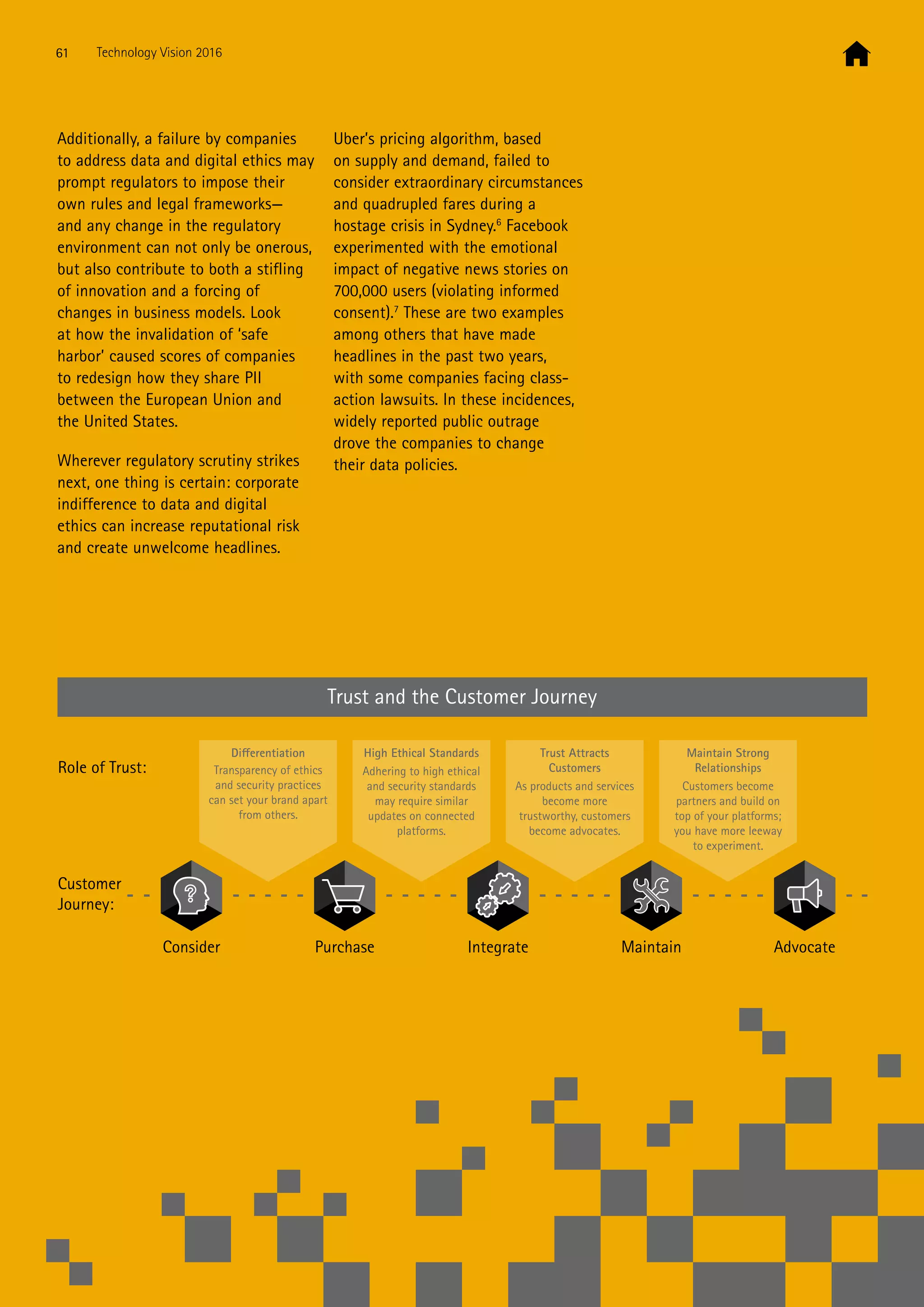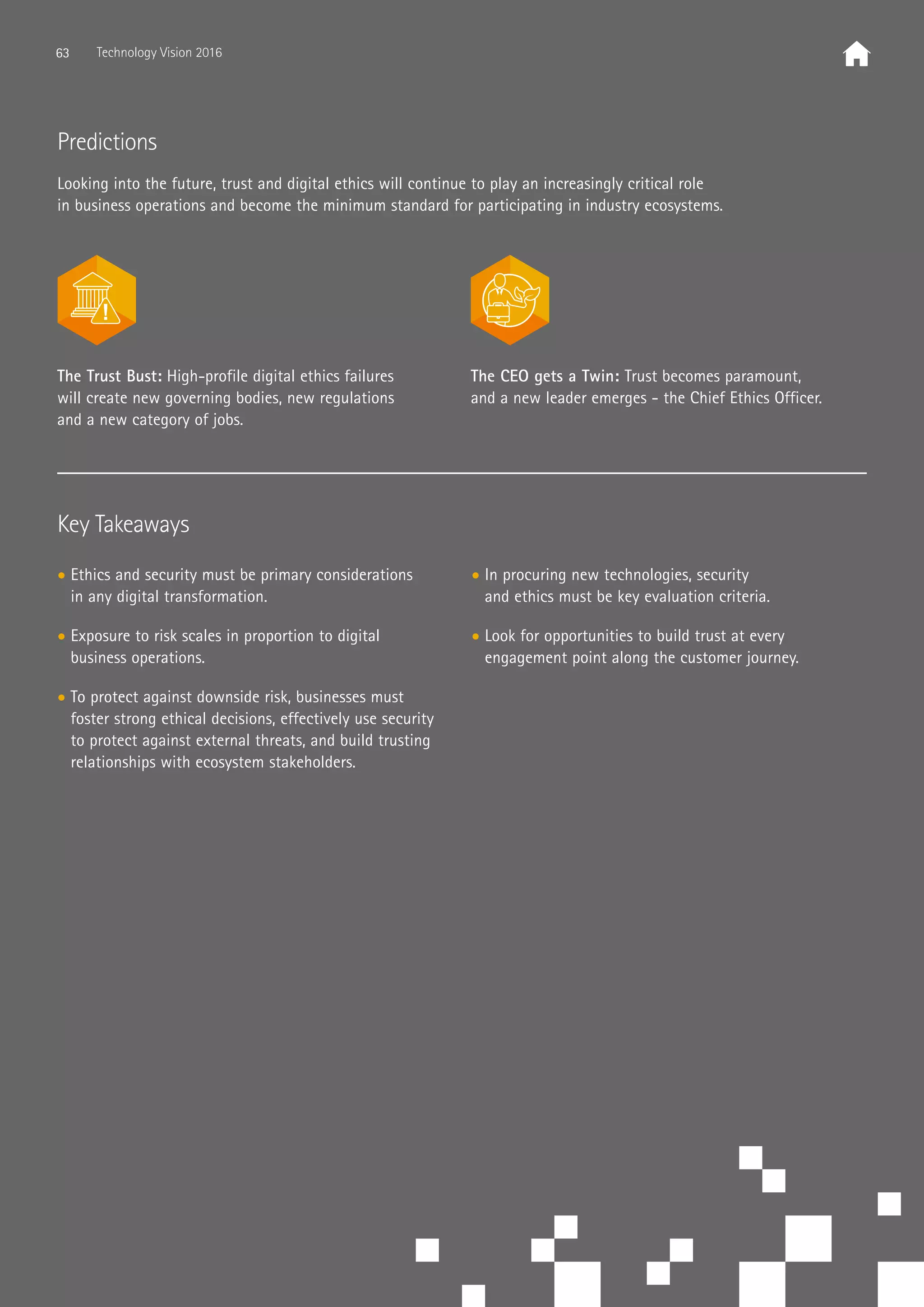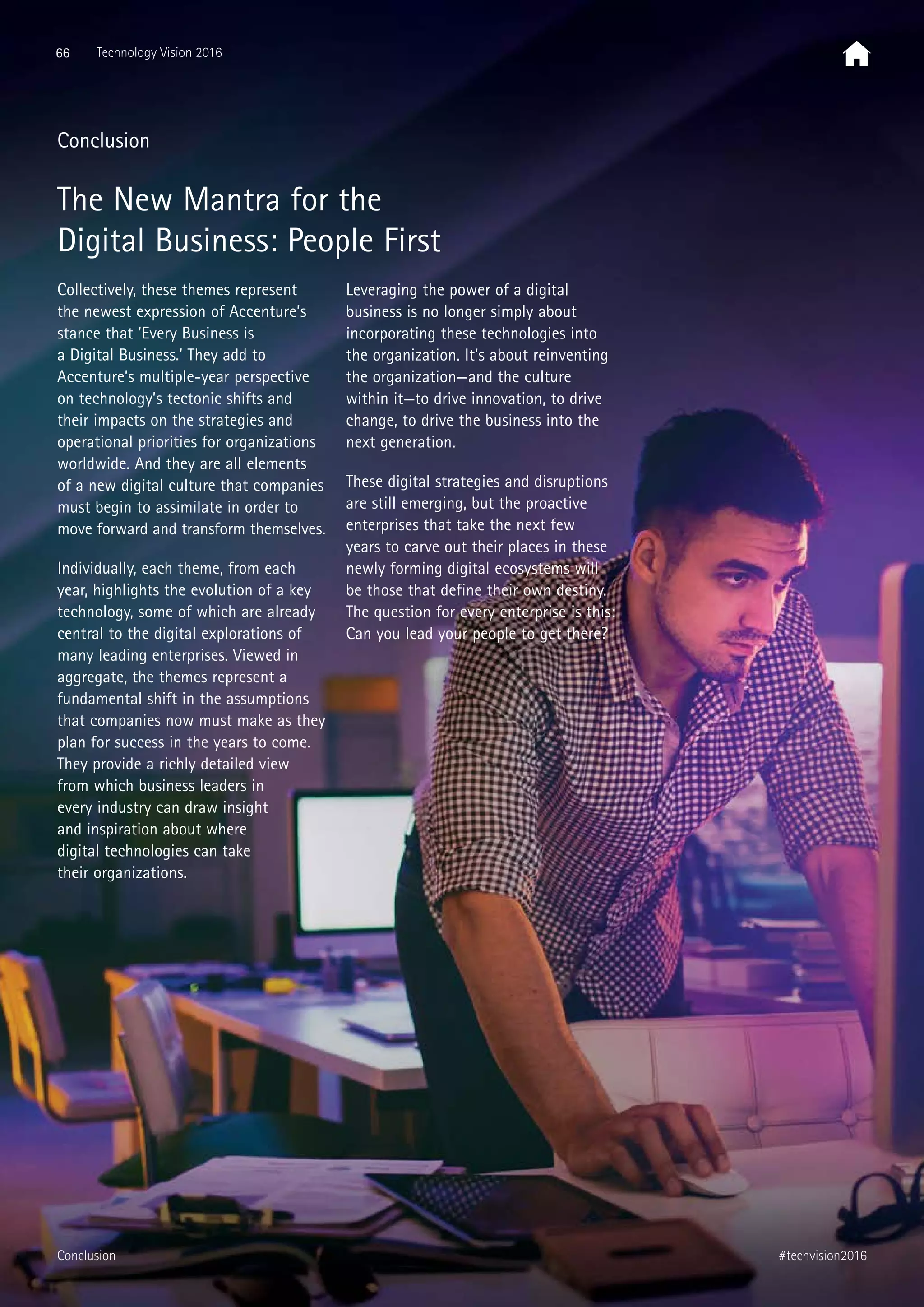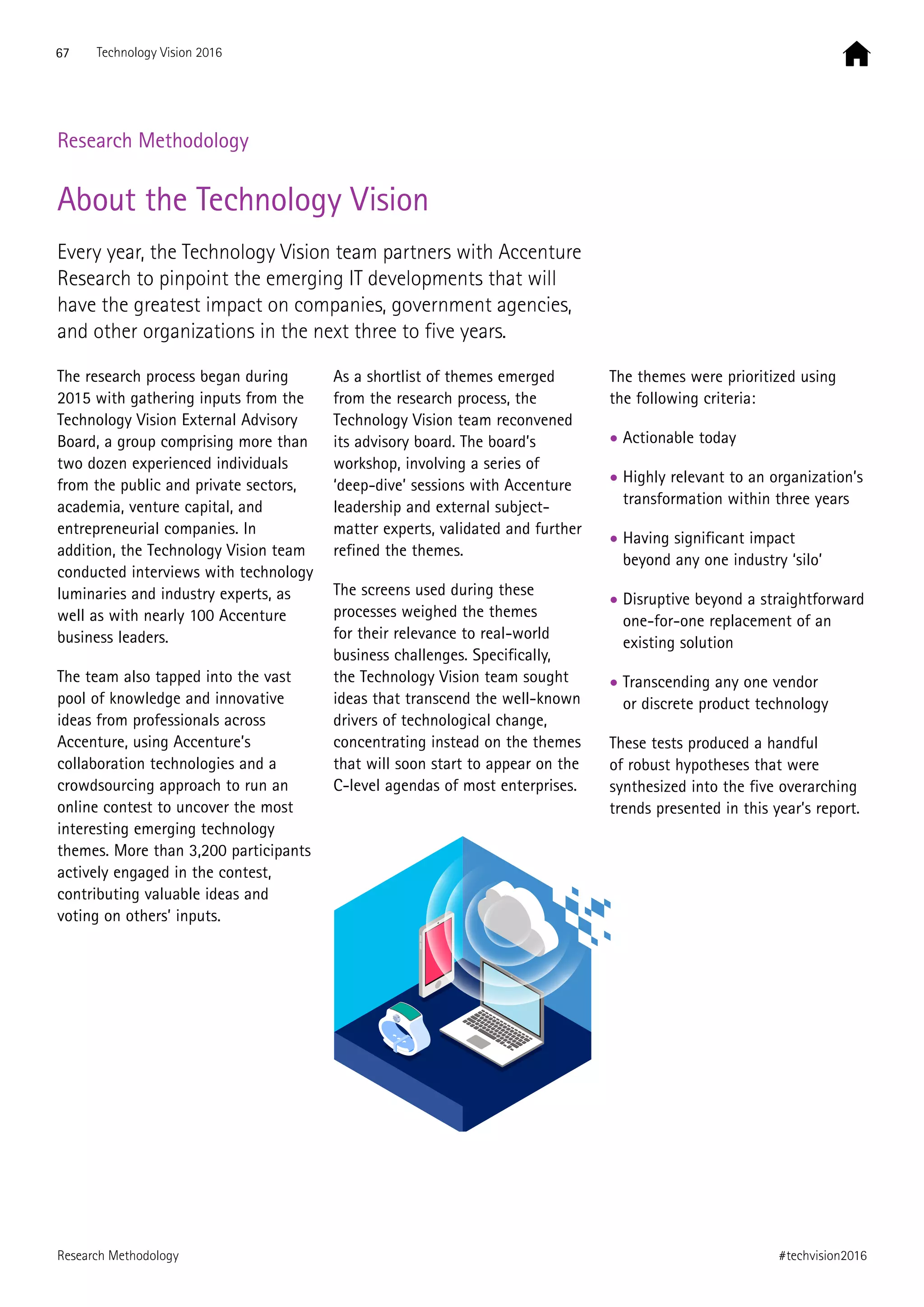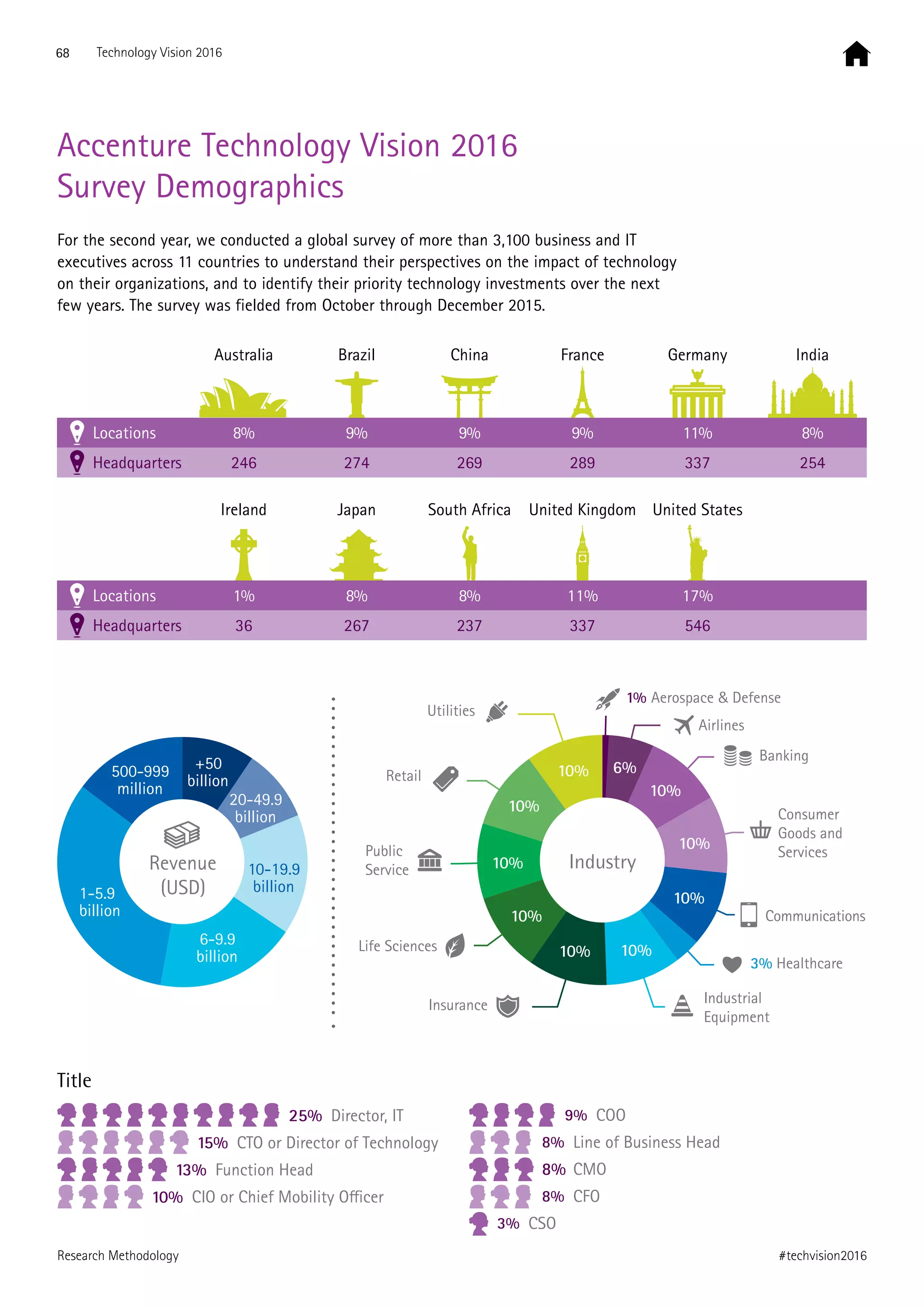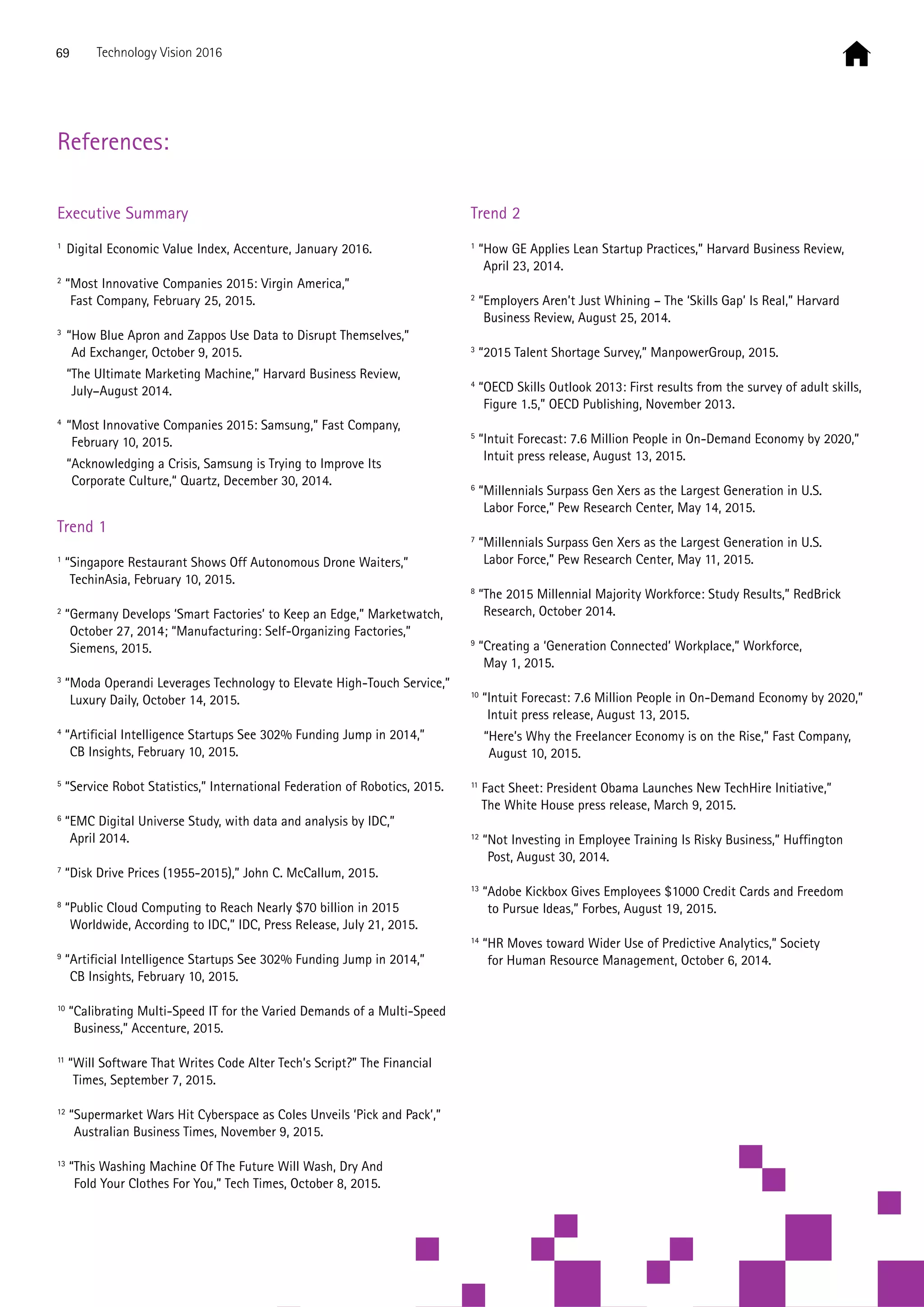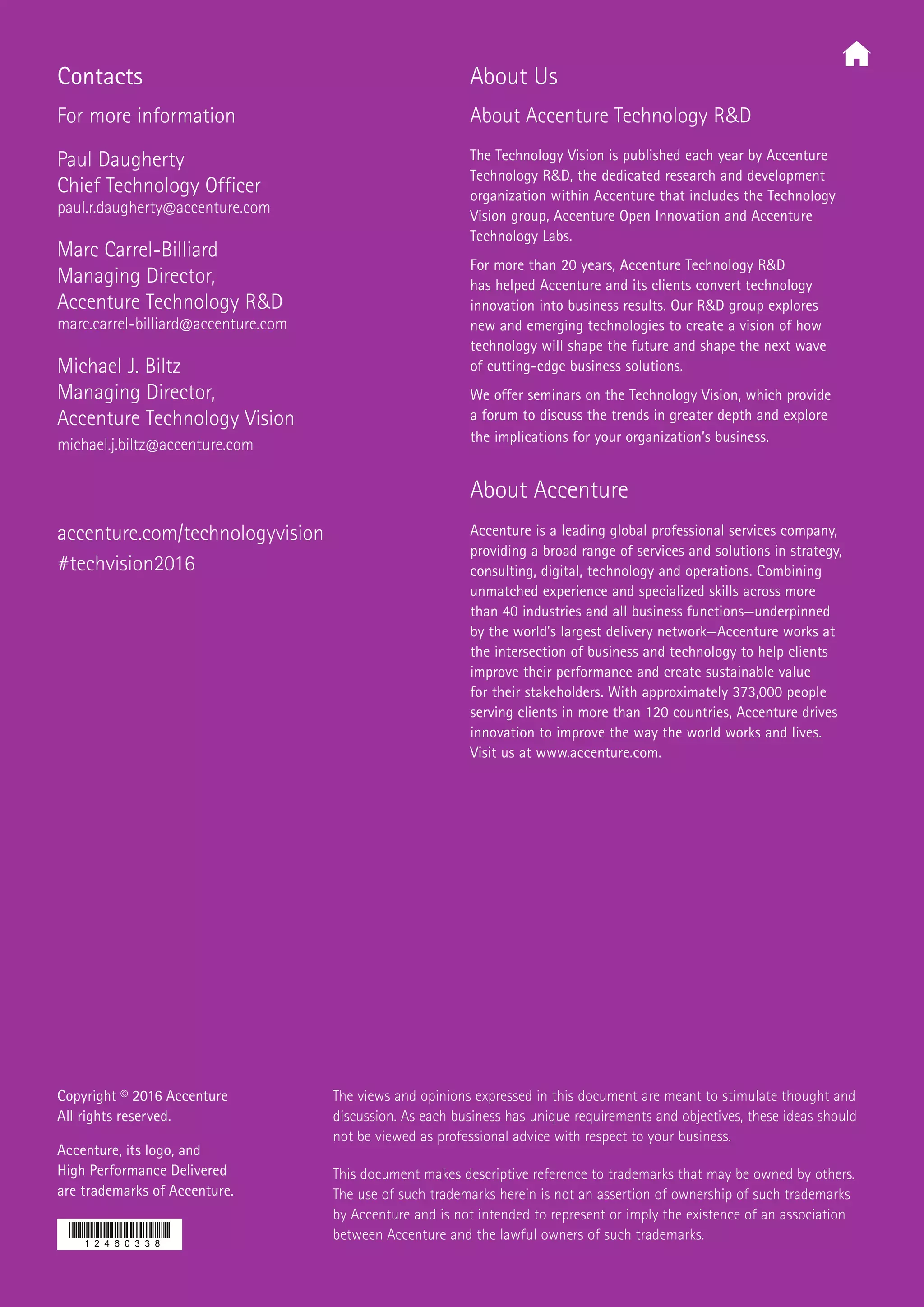The document summarizes Accenture's Technology Vision 2016, which focuses on the theme of "People First: The Primacy of People in a Digital Age." The summary highlights that:
- Digital technologies now dominate the global economy, accounting for 22% in 2015 and forecasted to reach 25% by 2020.
- While technology is driving immense changes, companies must transform their corporate cultures to truly succeed in this new digital era - their people and ways of working must become digital as well.
- Four key pillars are identified for building a thriving digital culture: being built for change, being data-driven, embracing disruption, and having digital risk awareness.
- The five technology trends covered in the
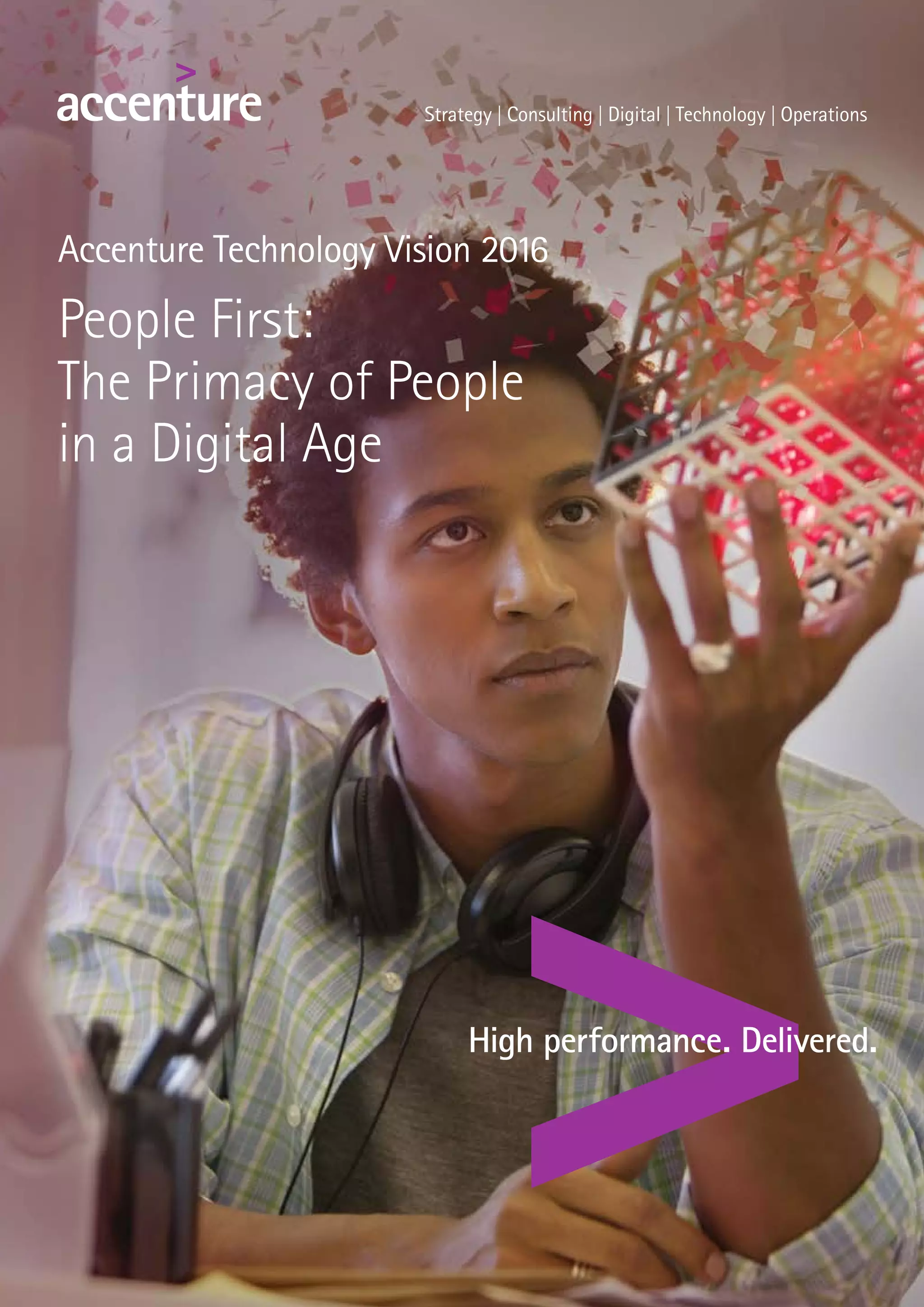
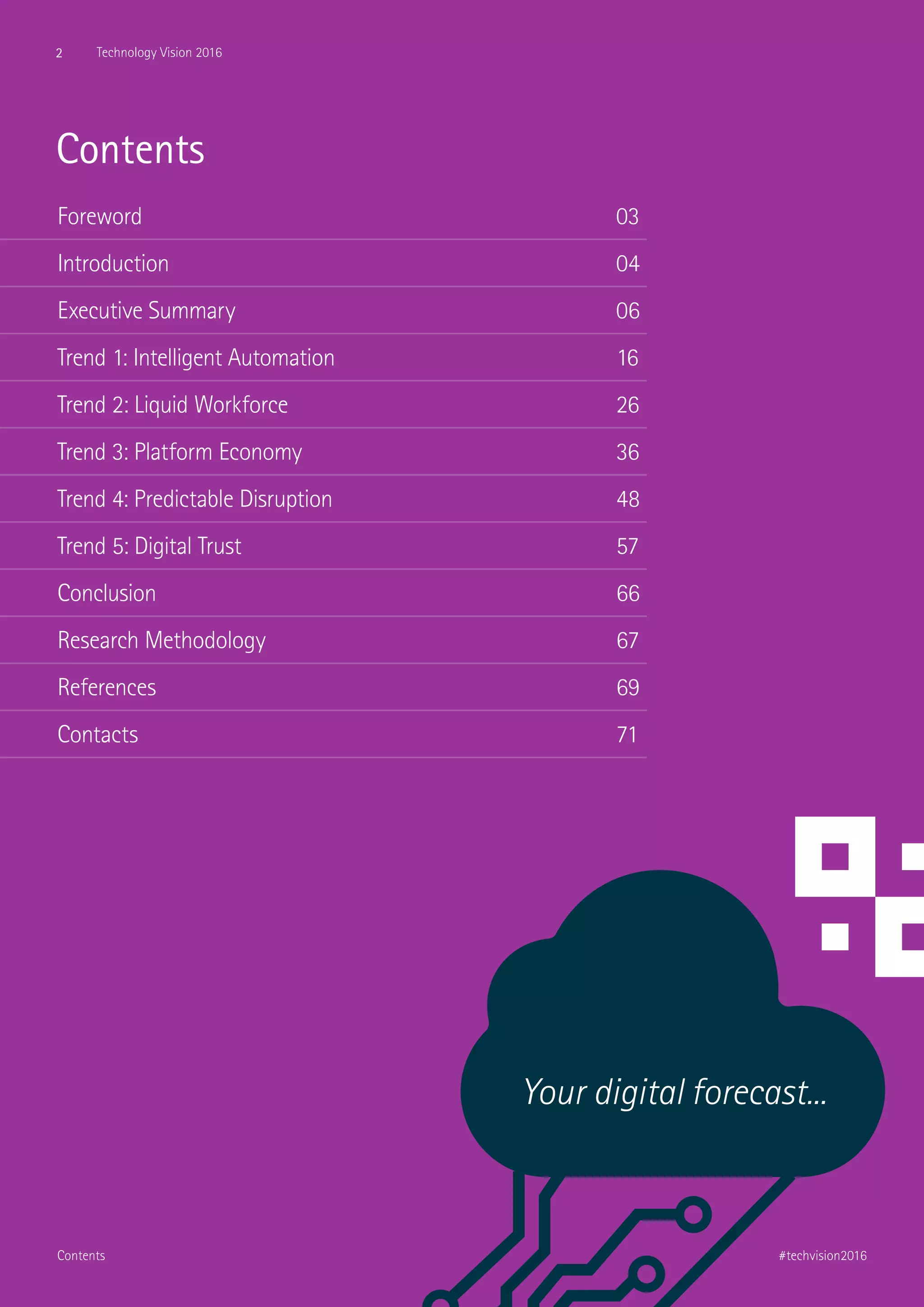
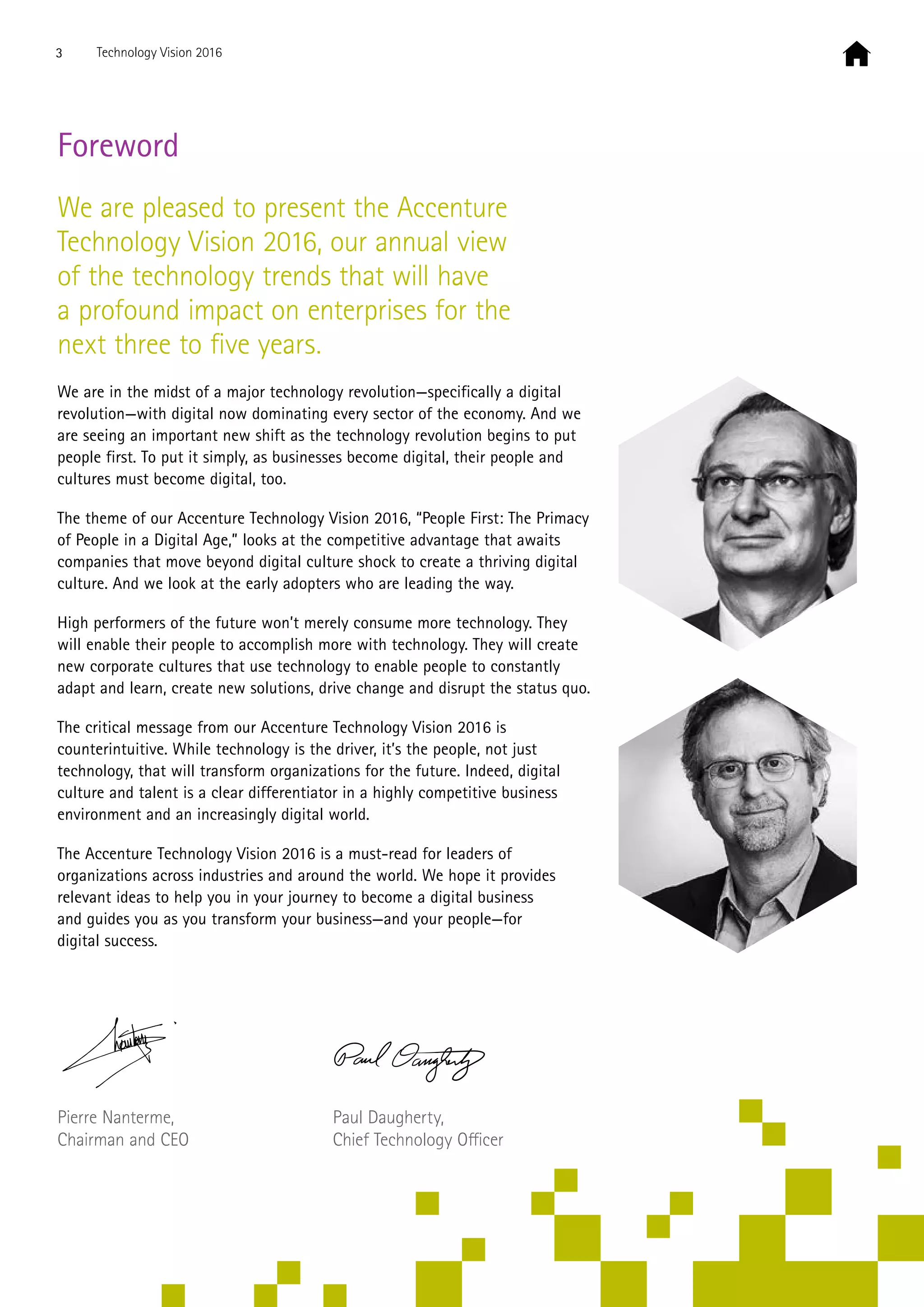
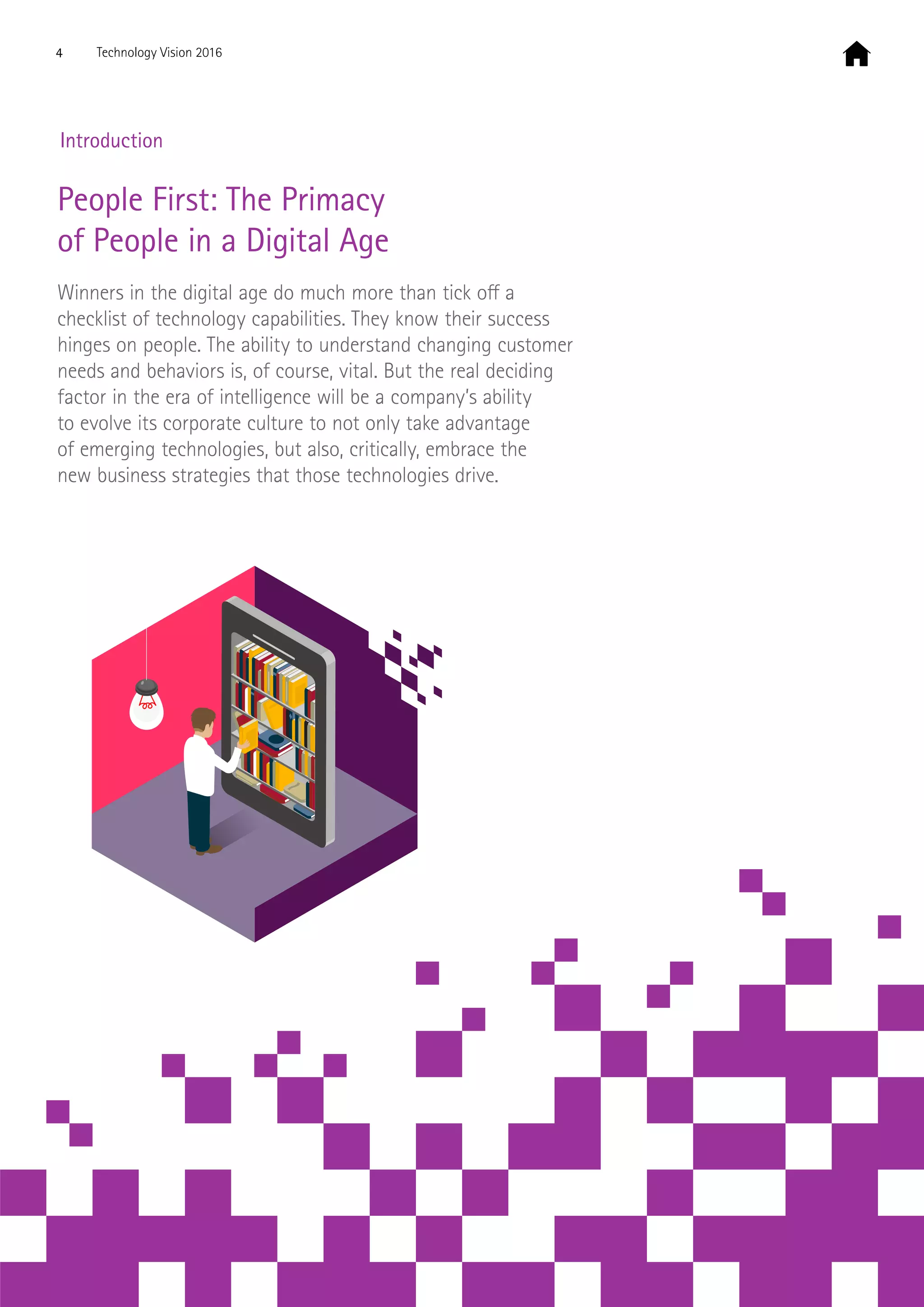
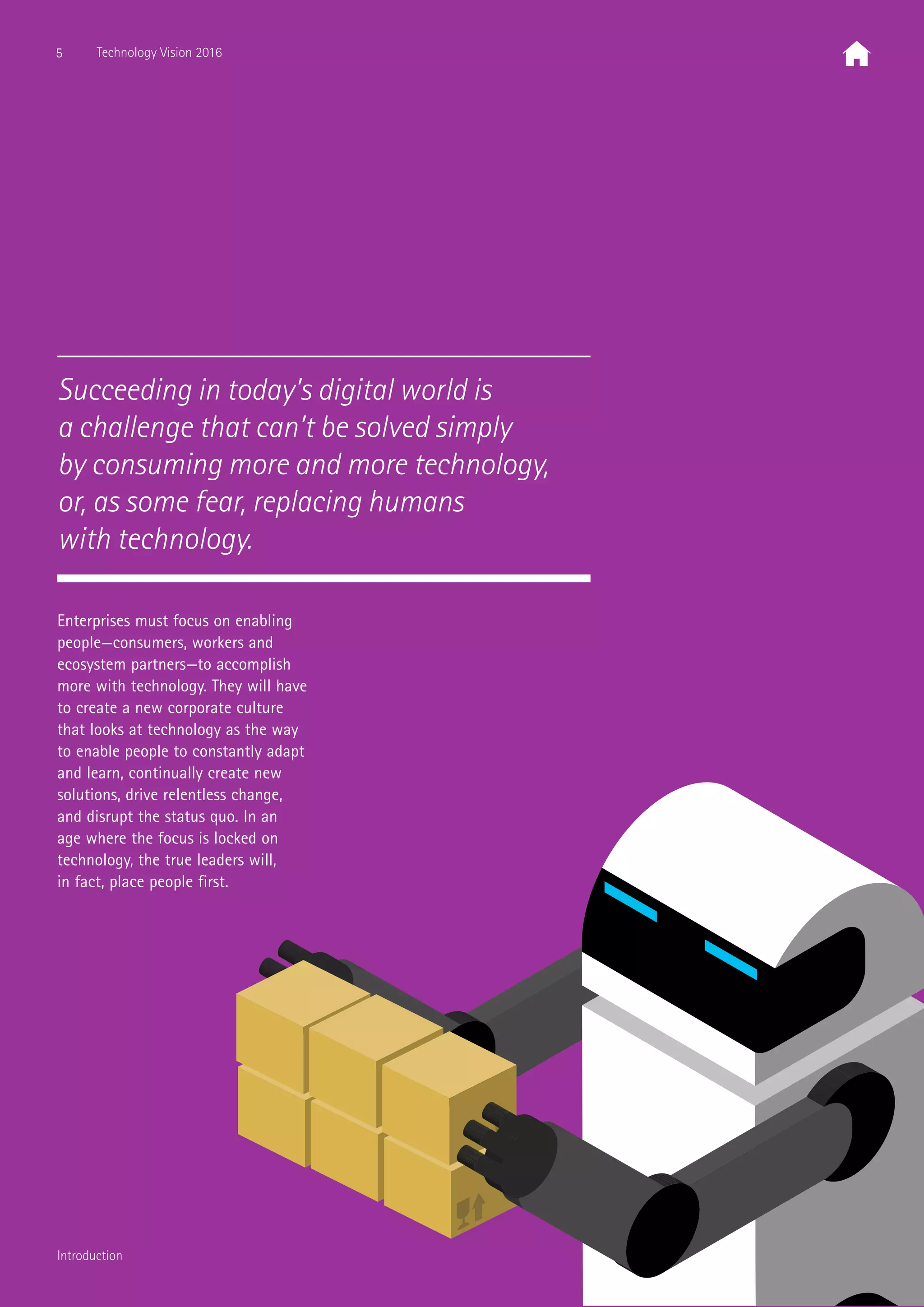

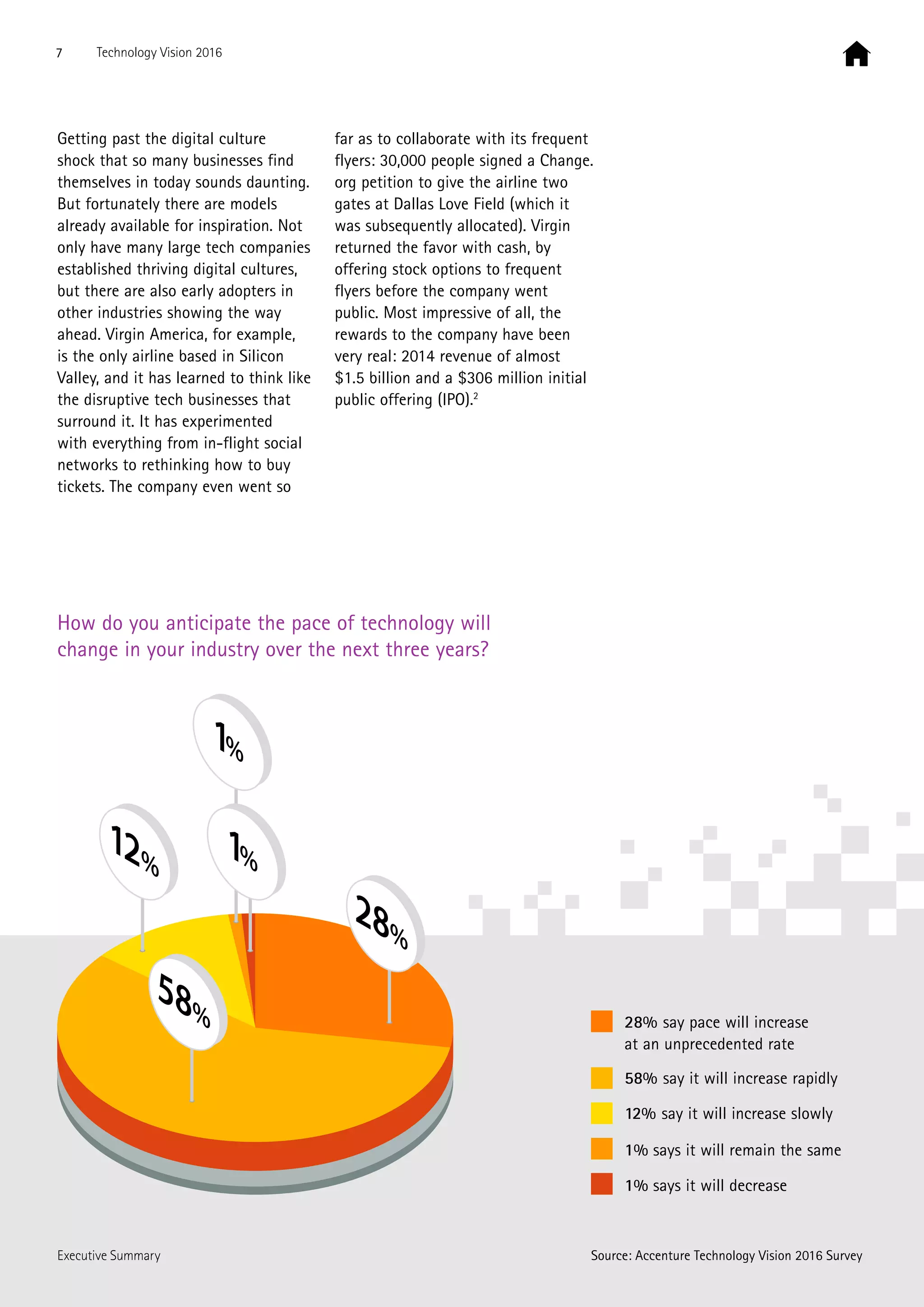
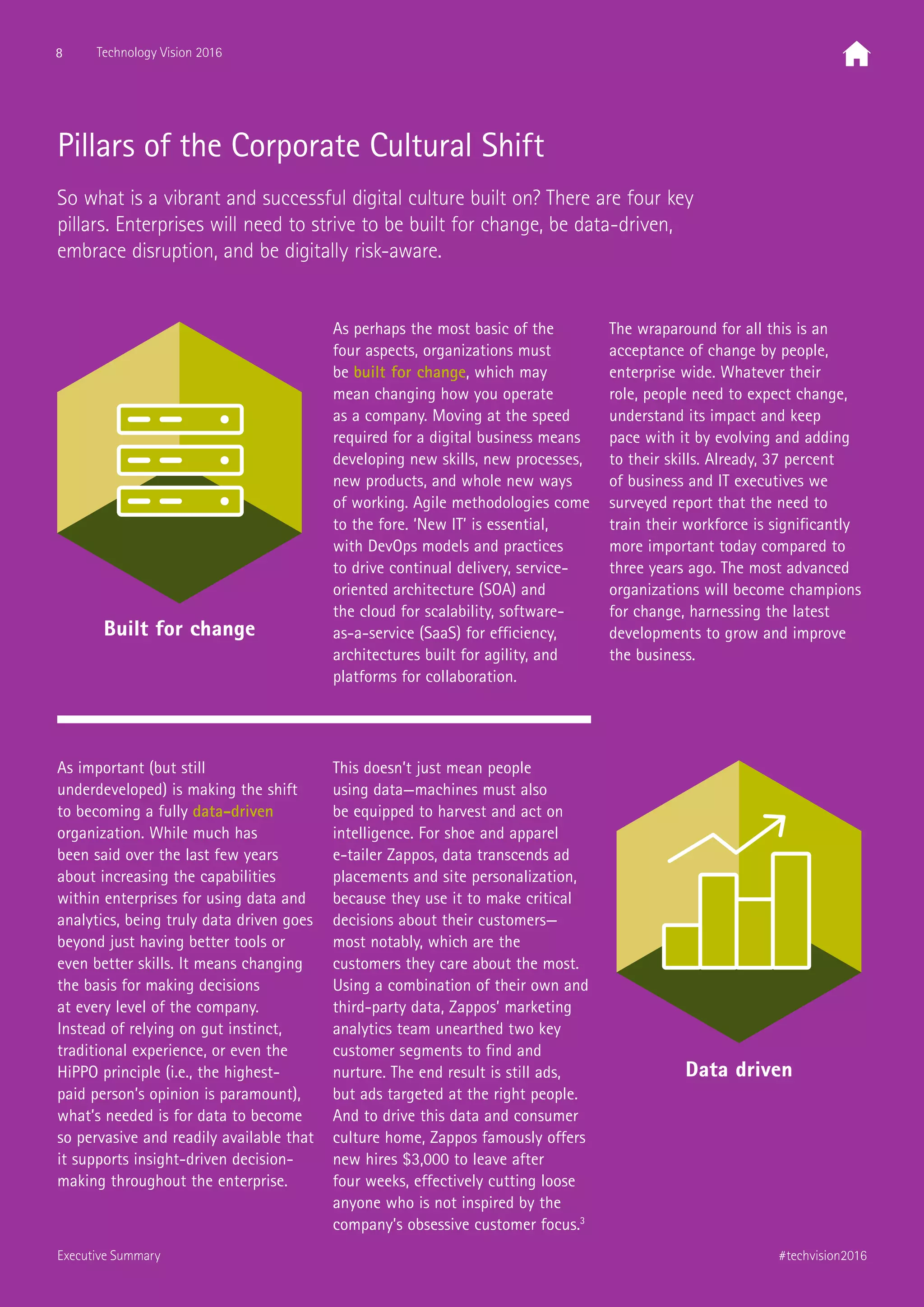
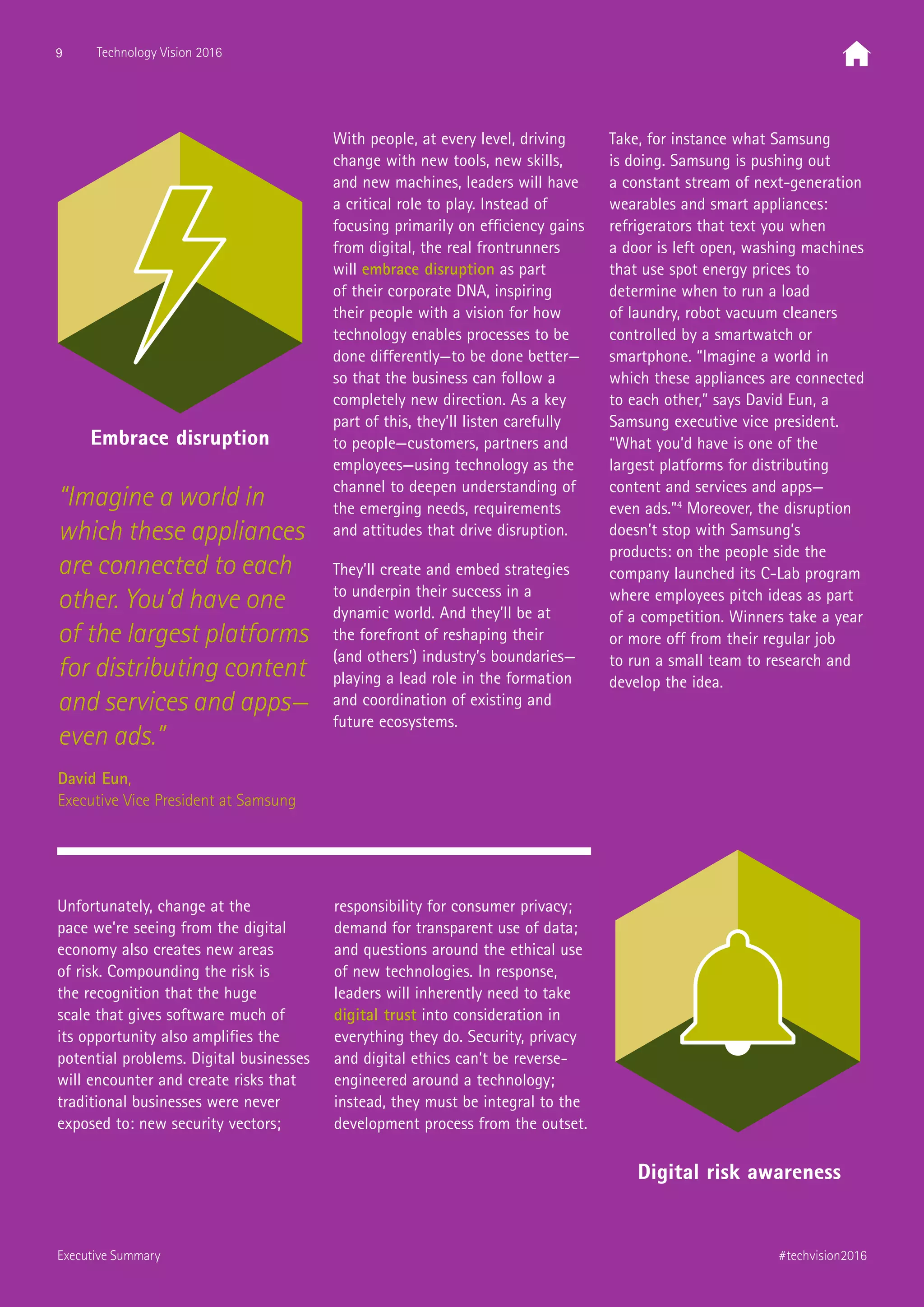

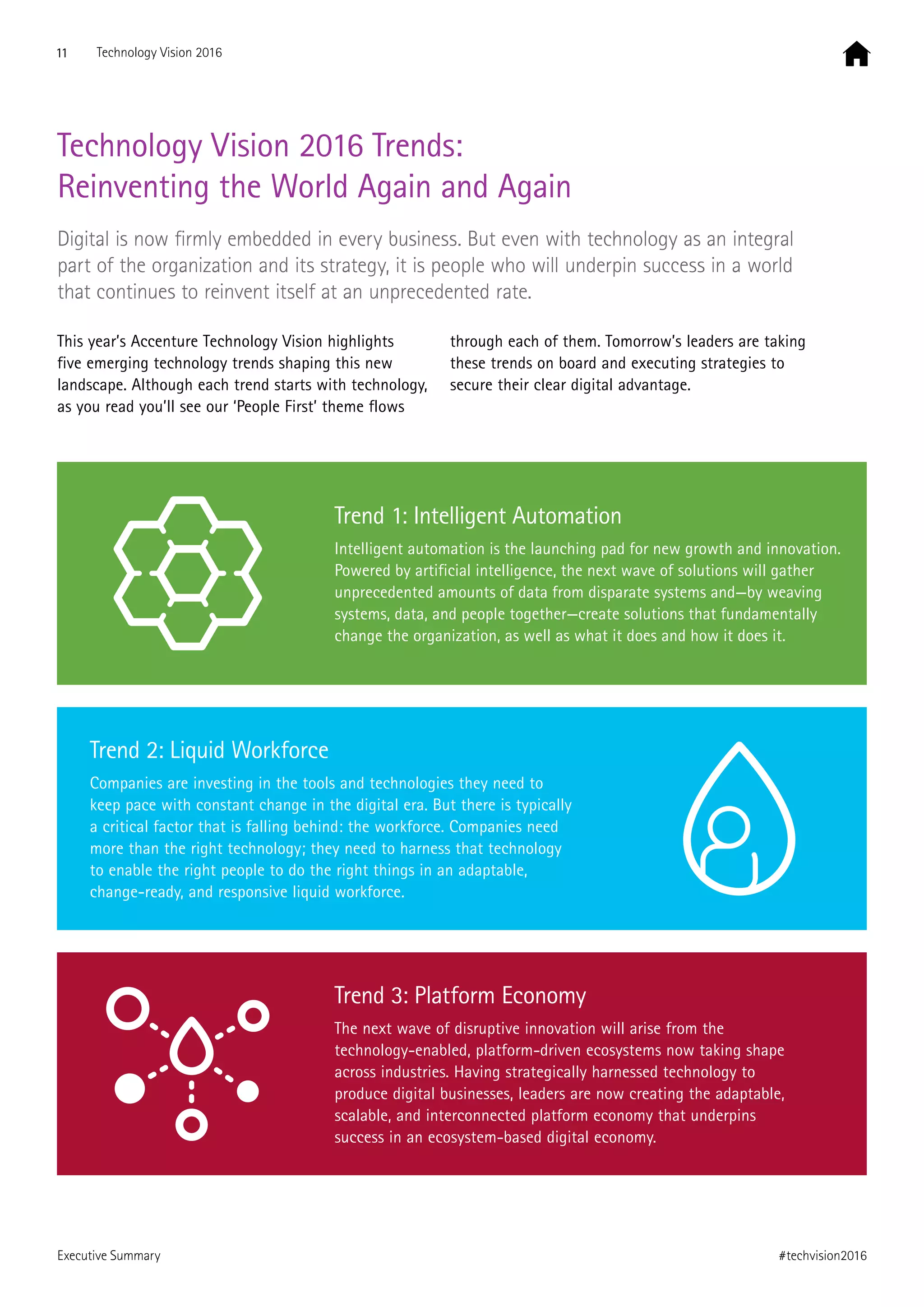
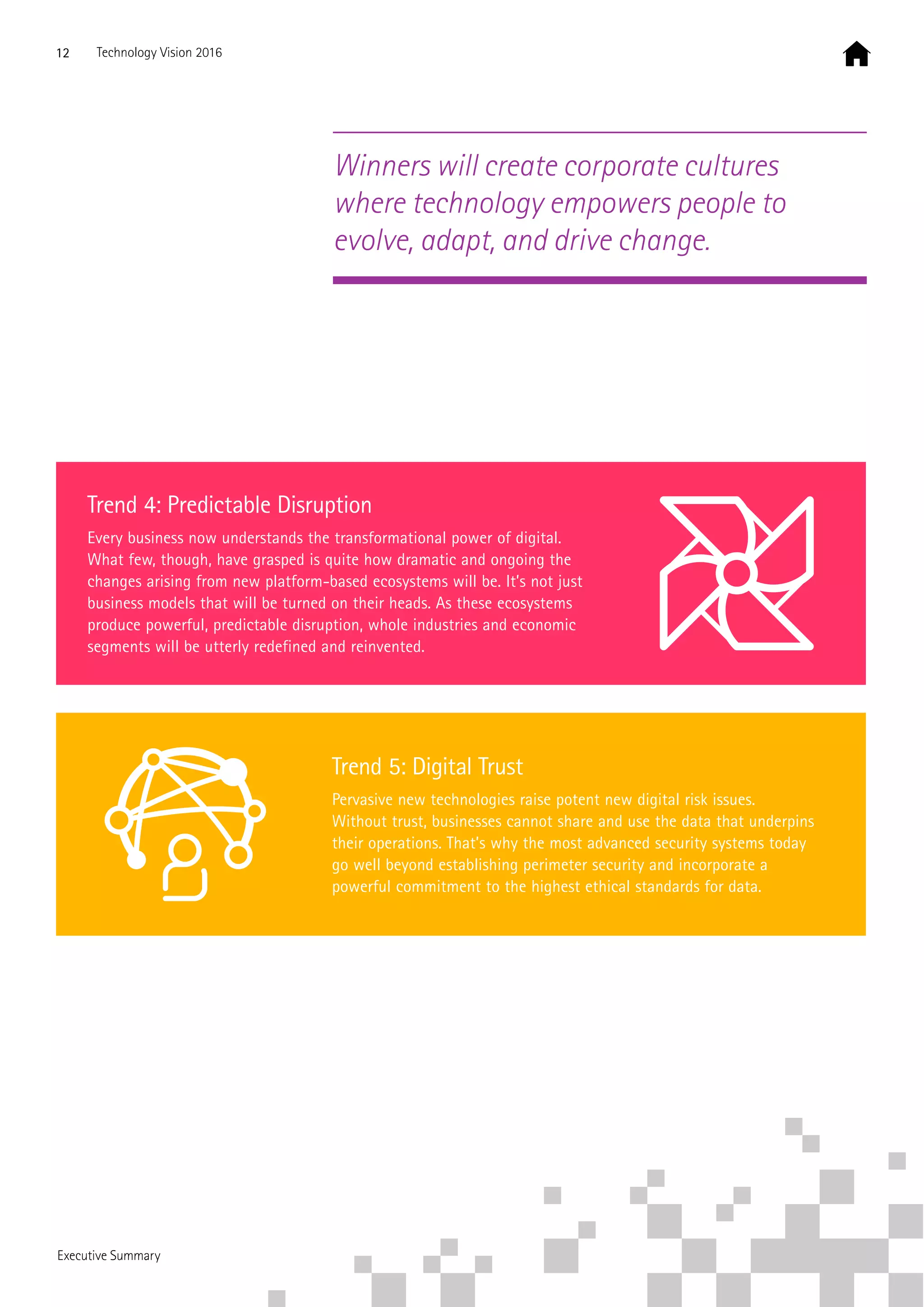
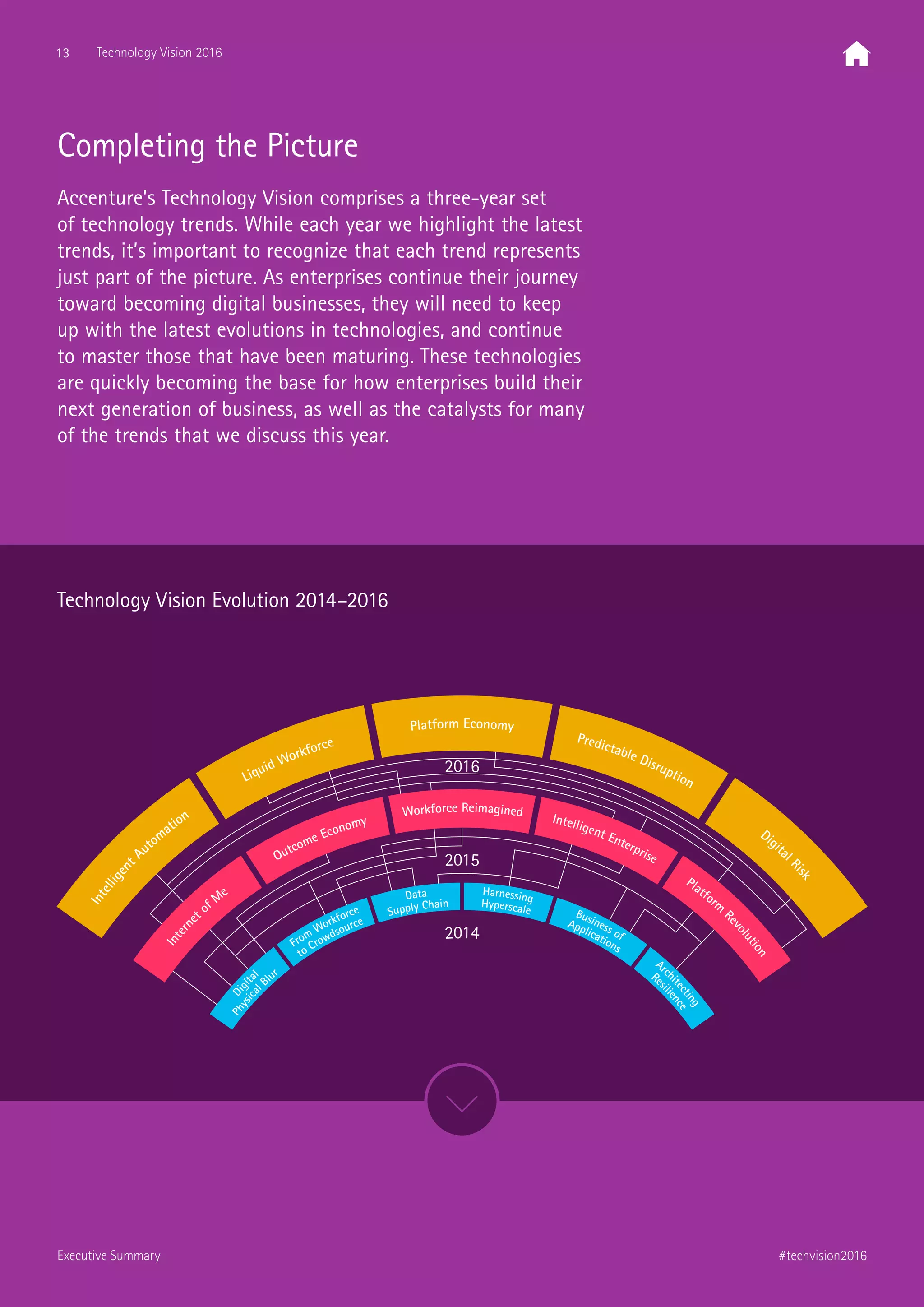

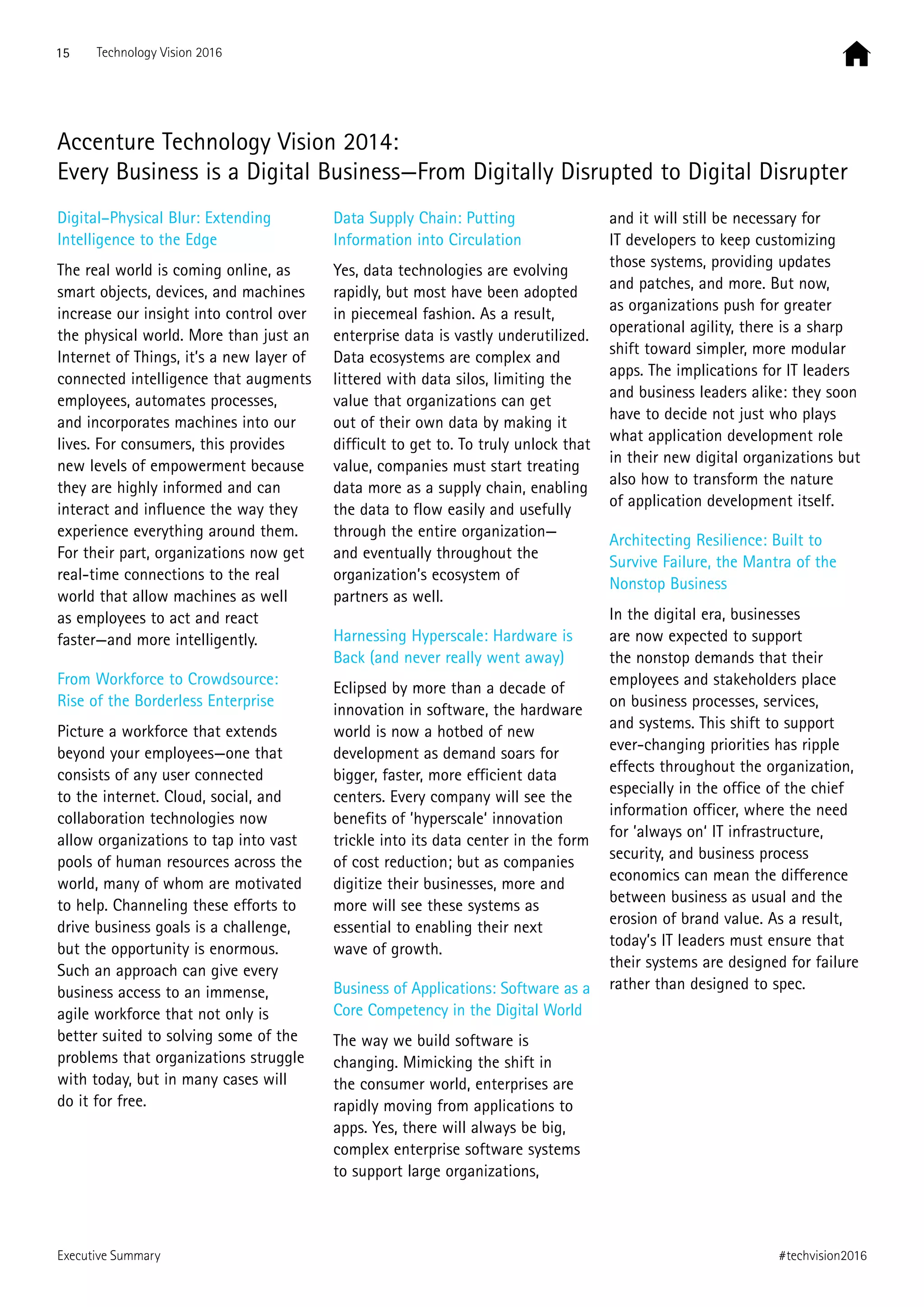
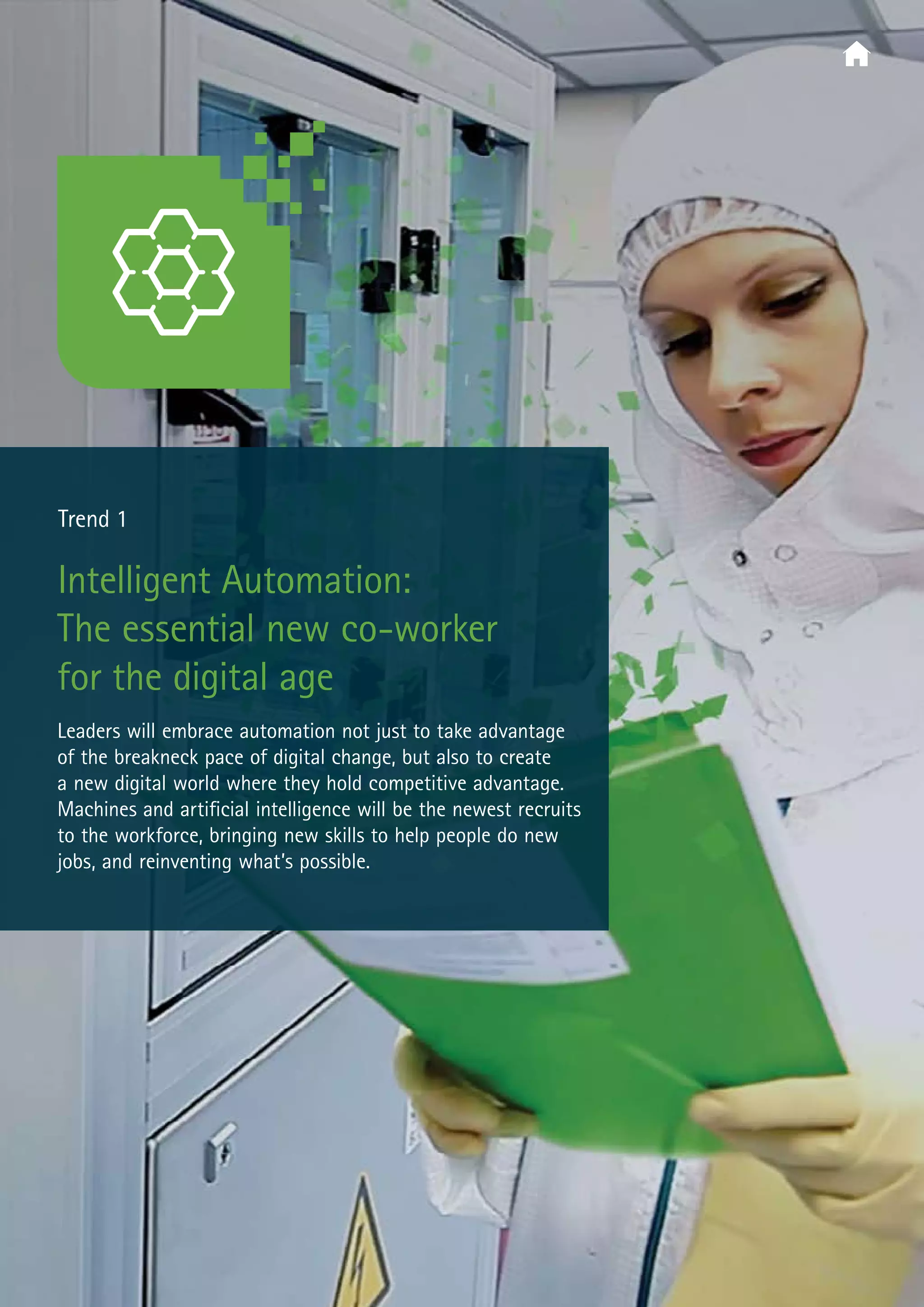
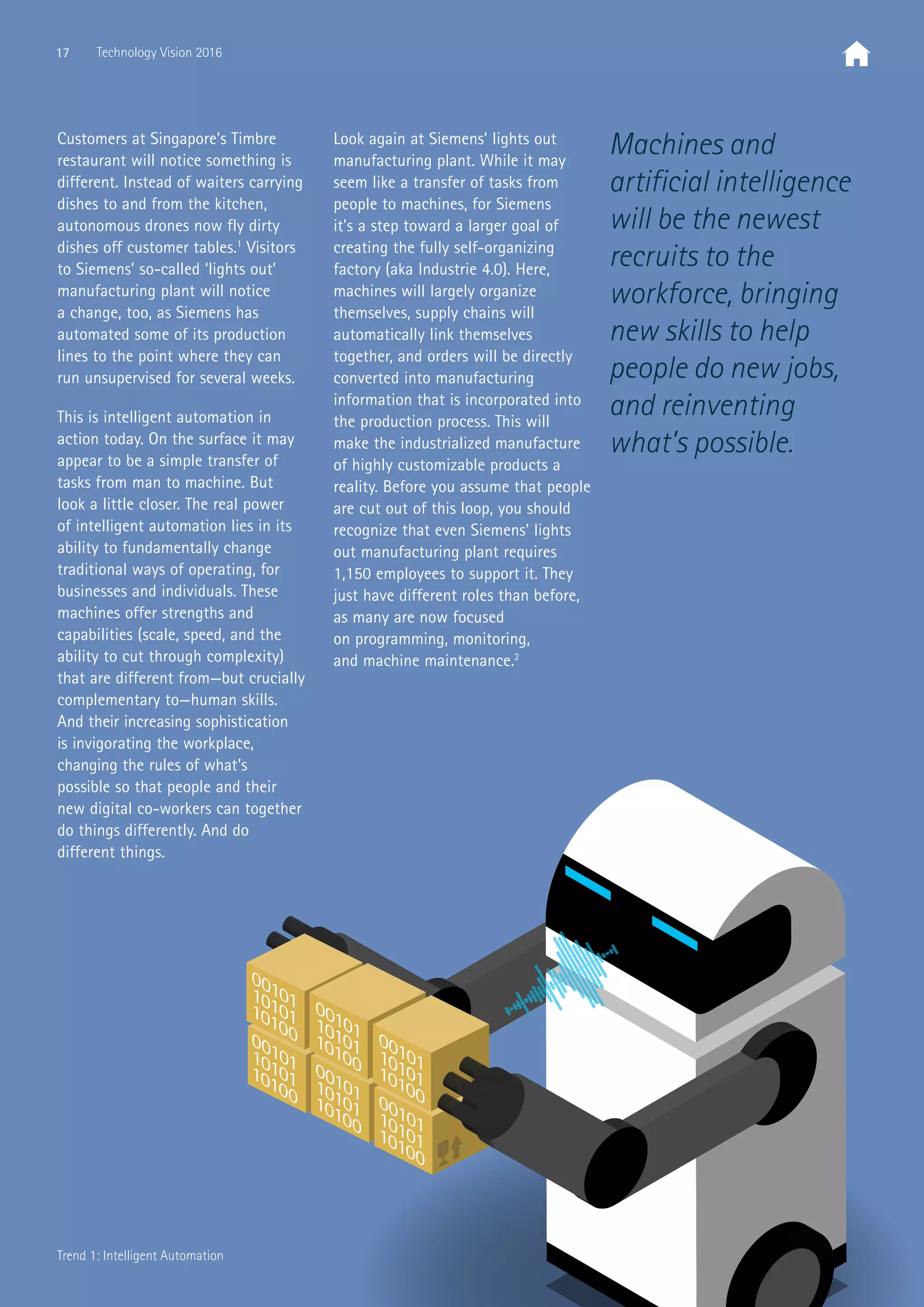
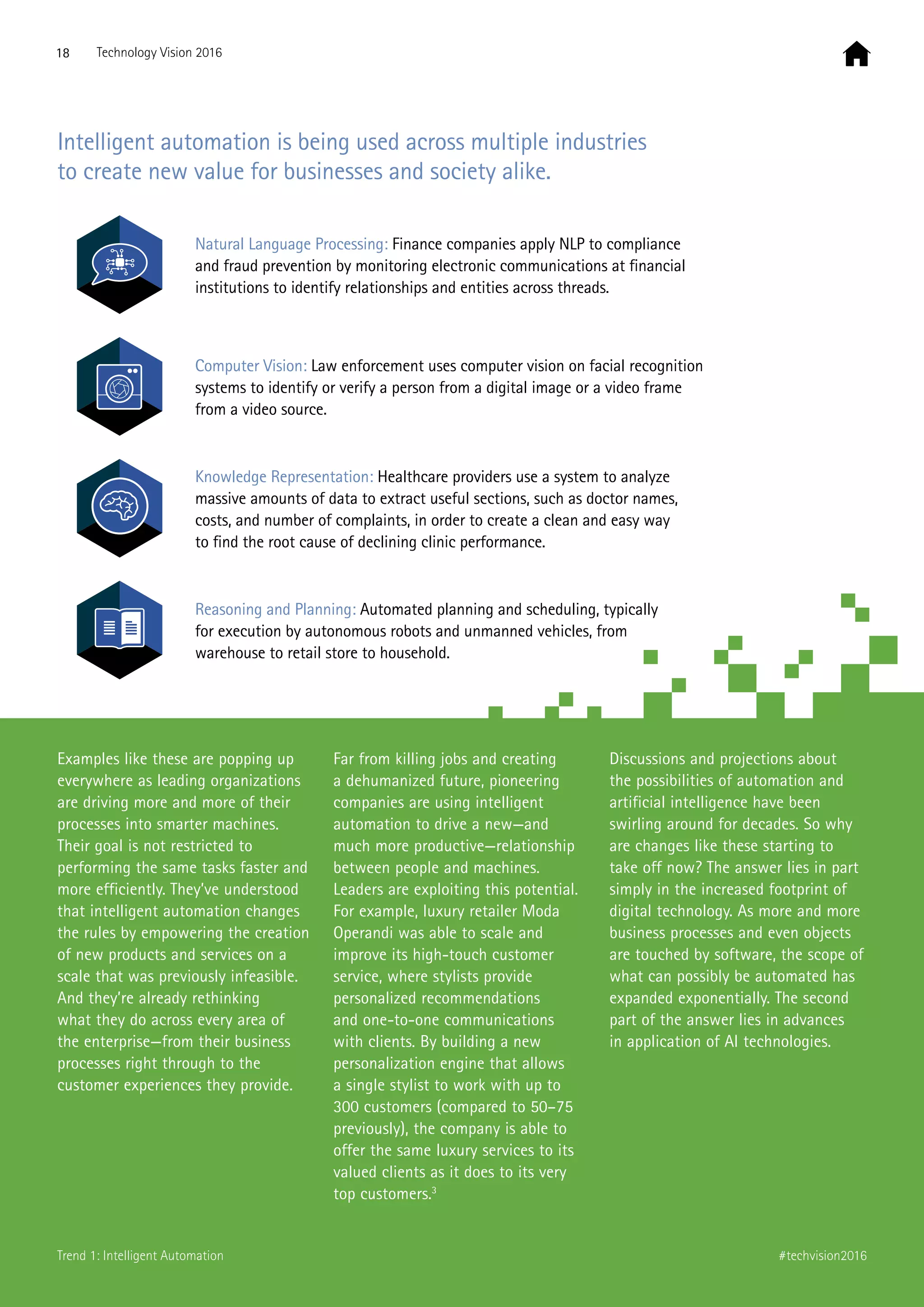
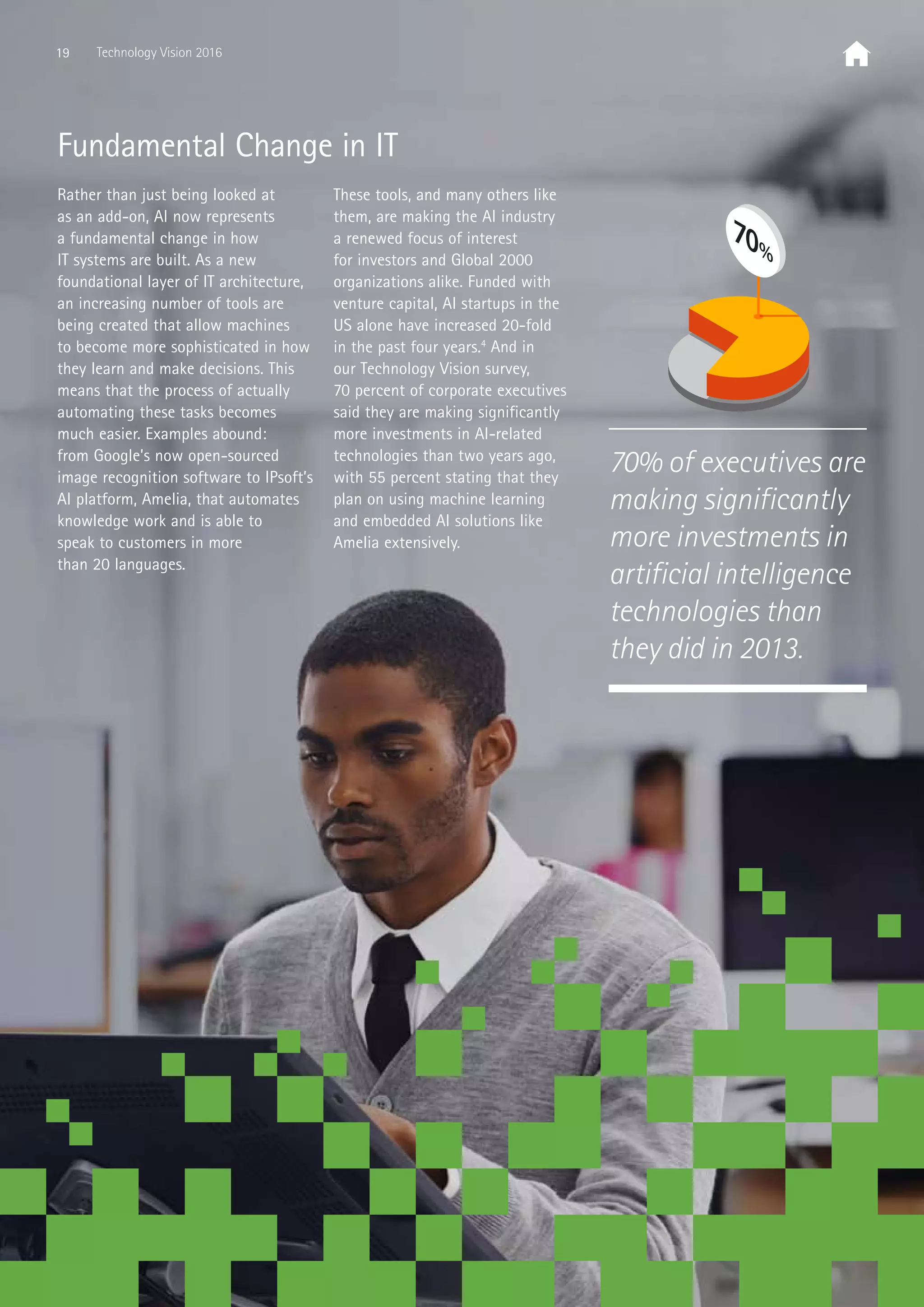
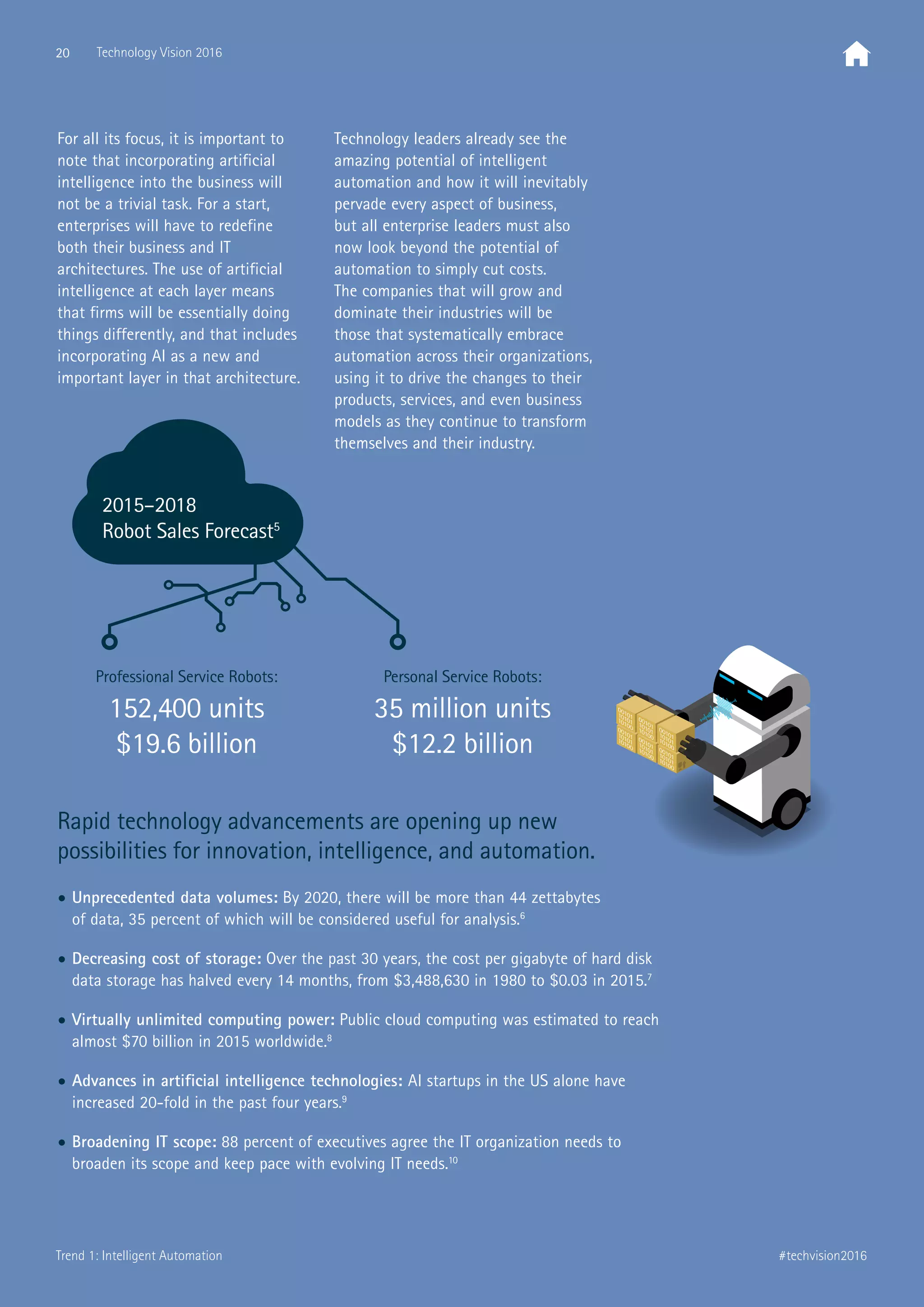
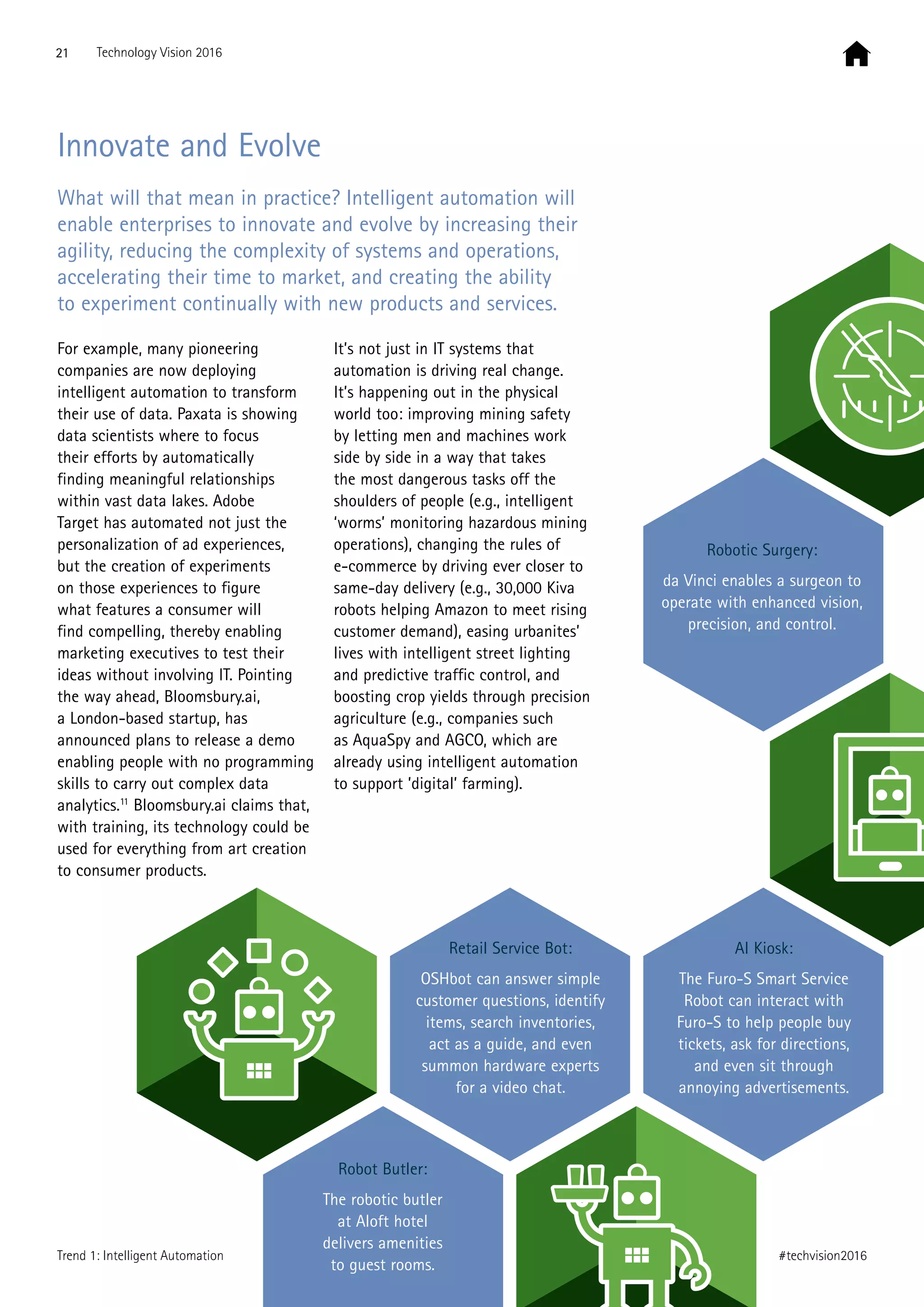
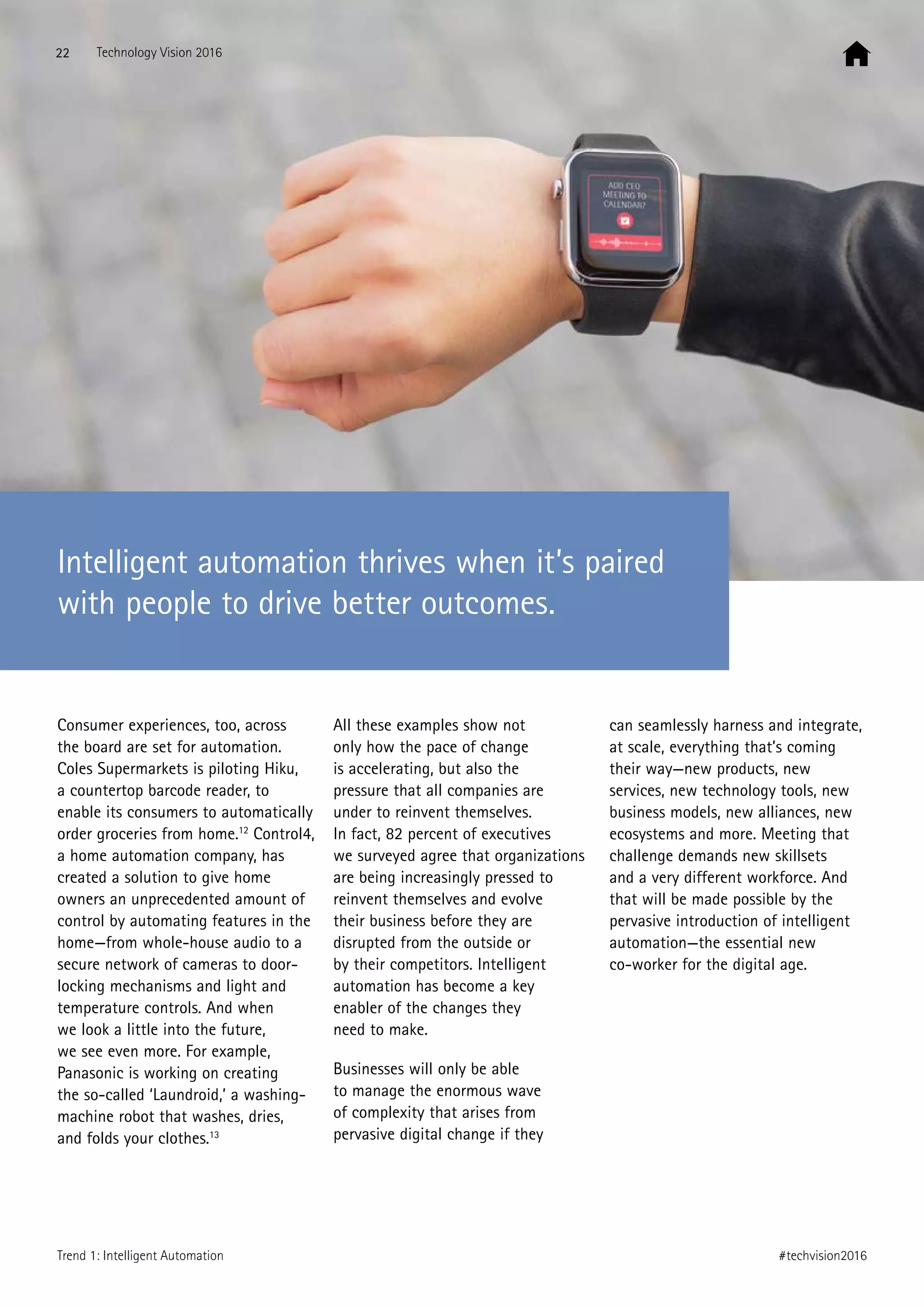


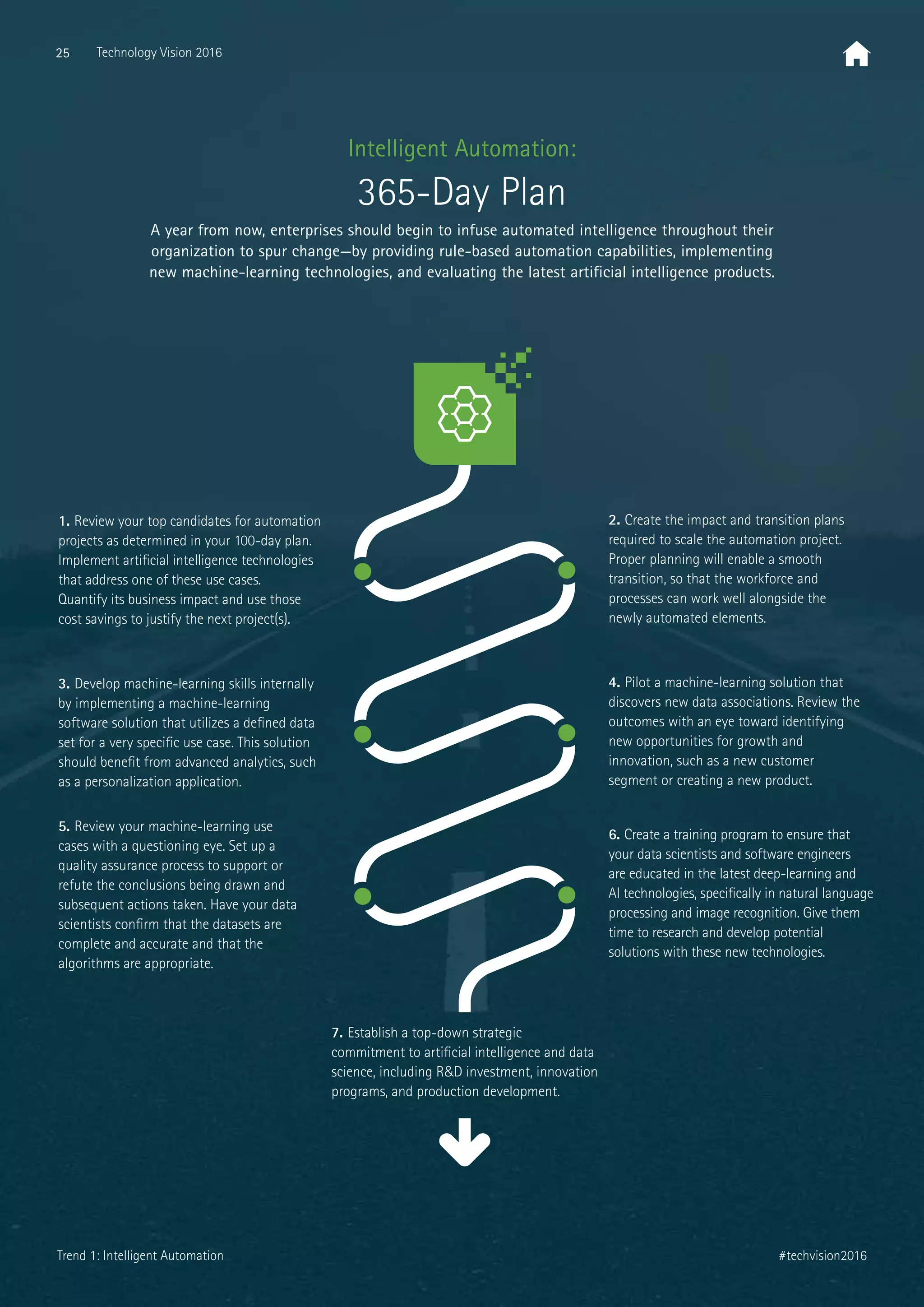
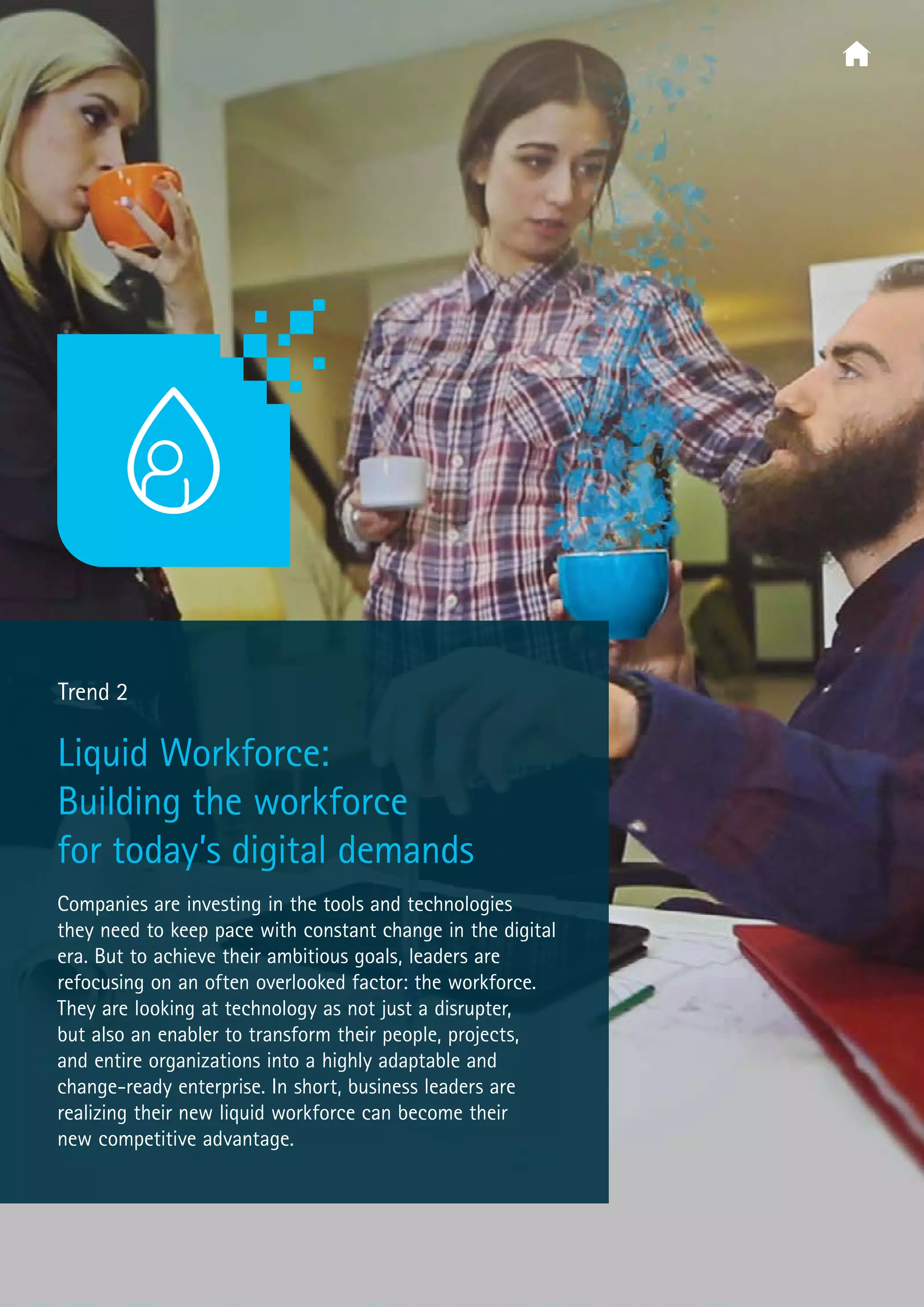
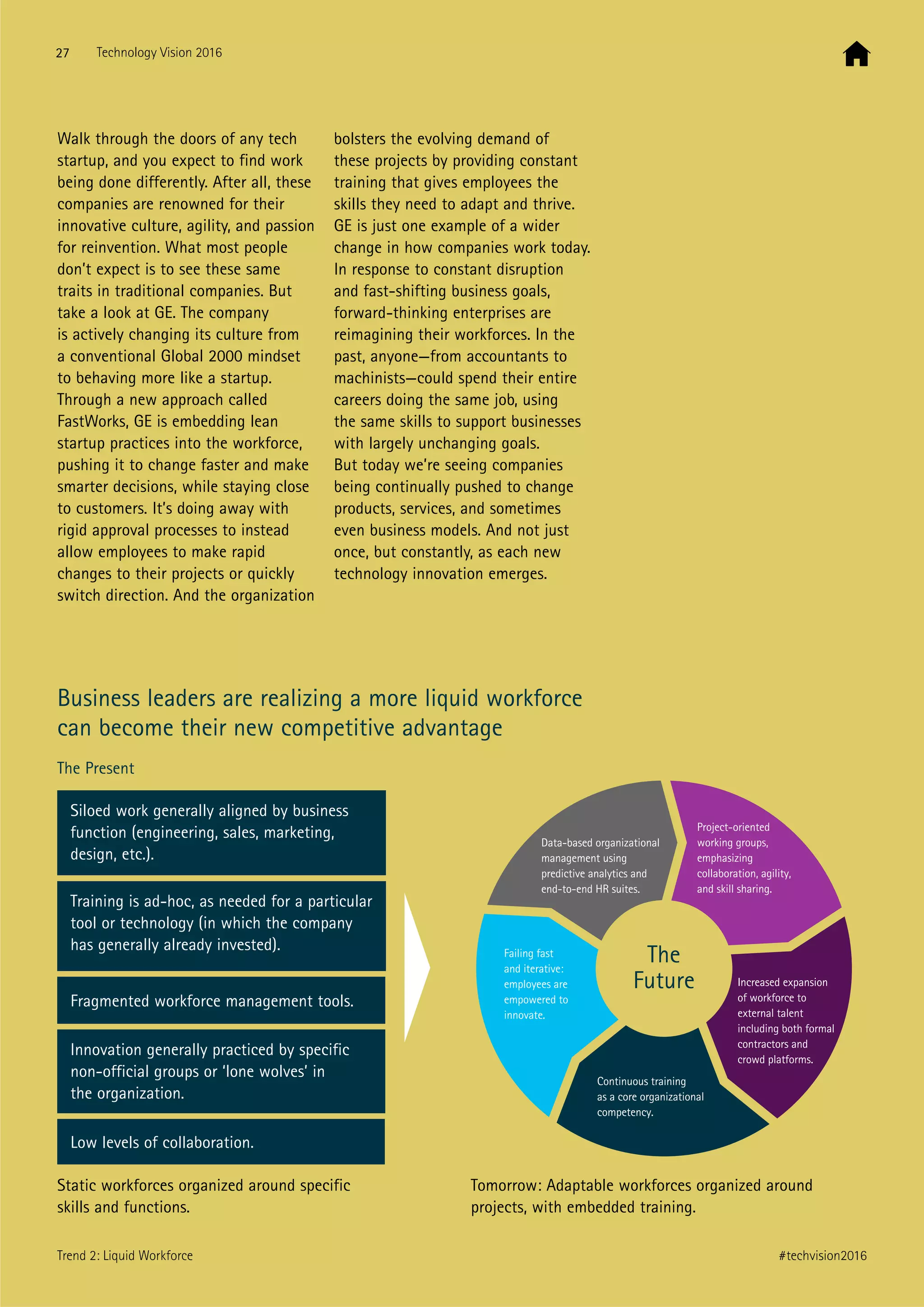
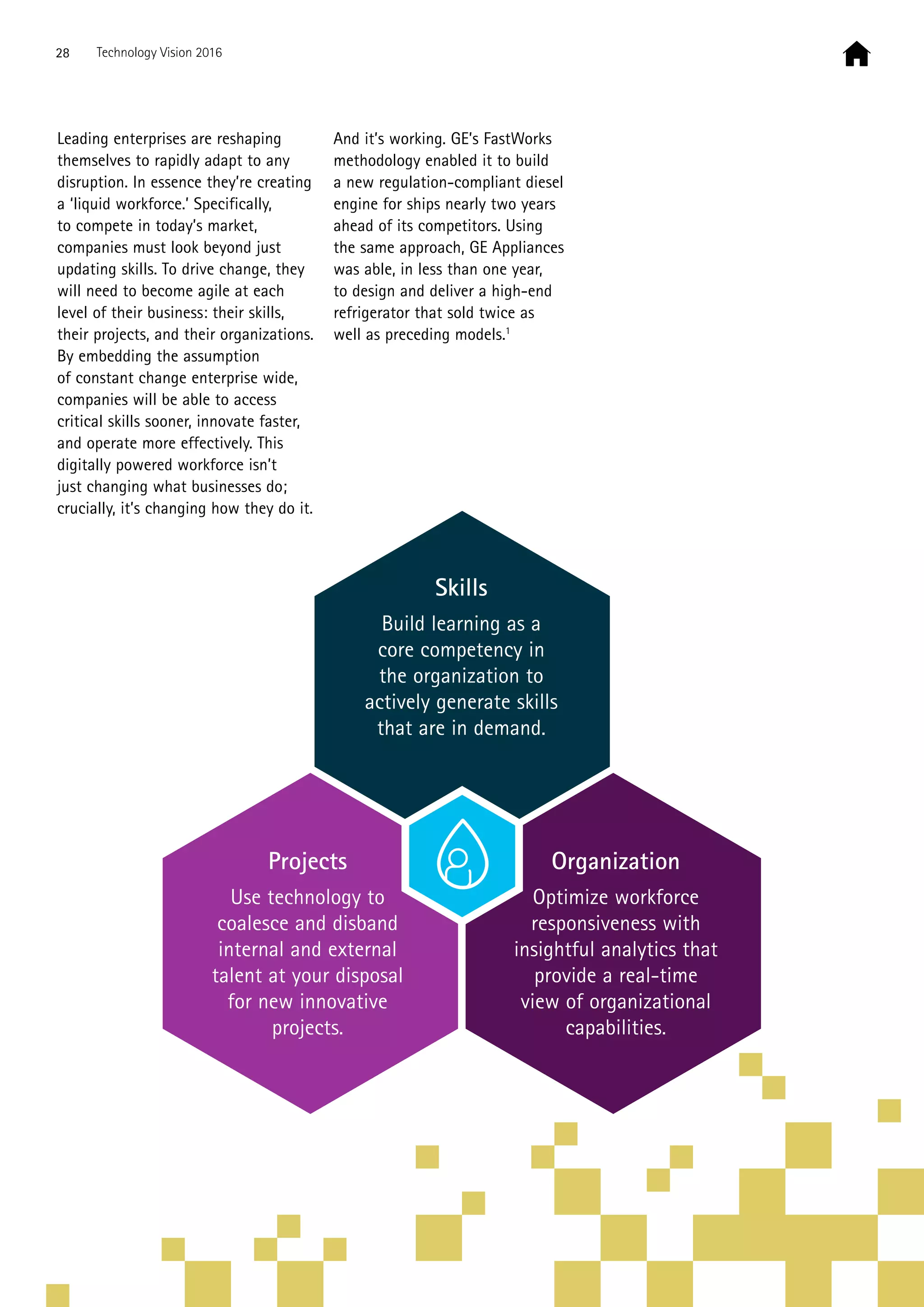
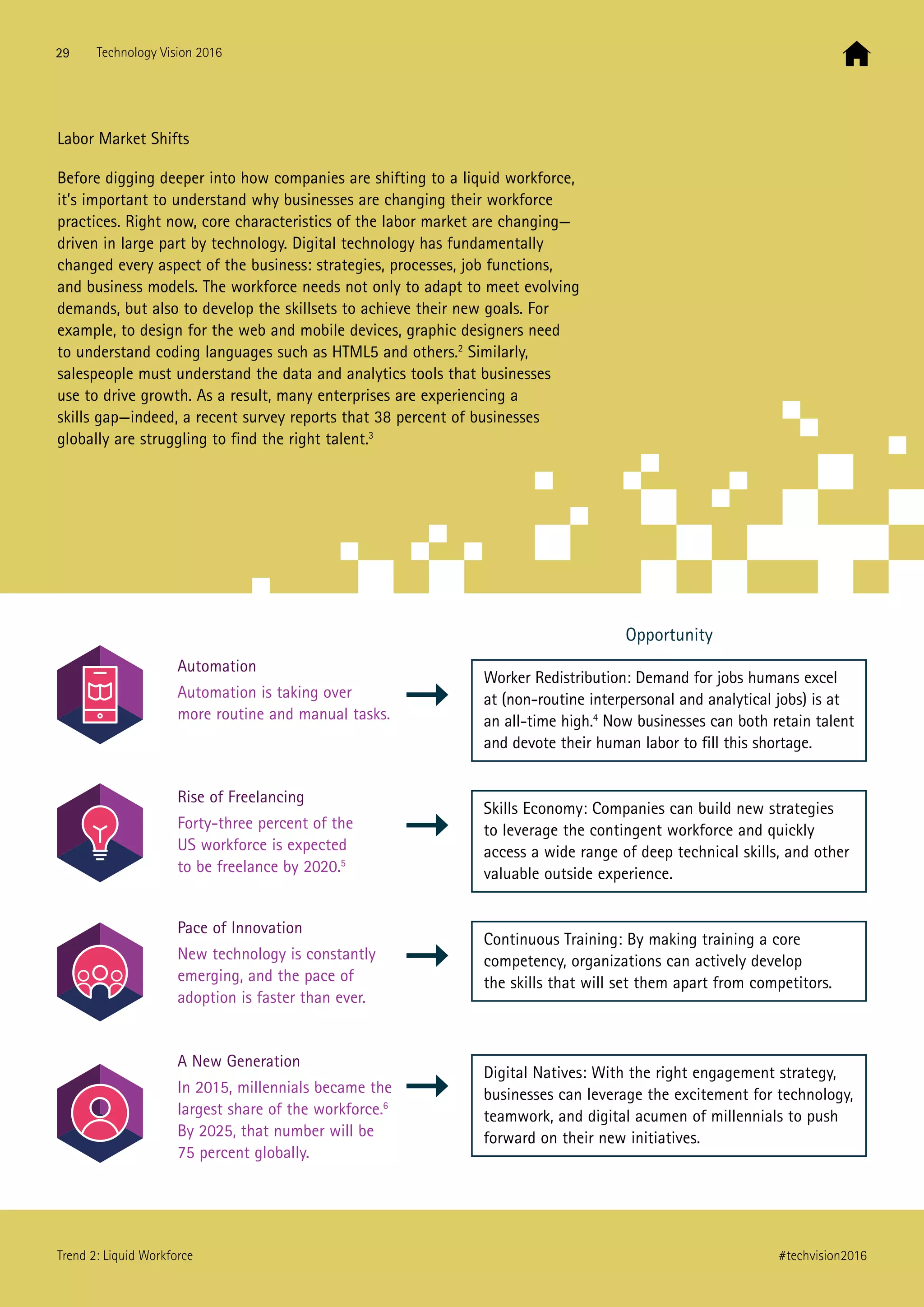
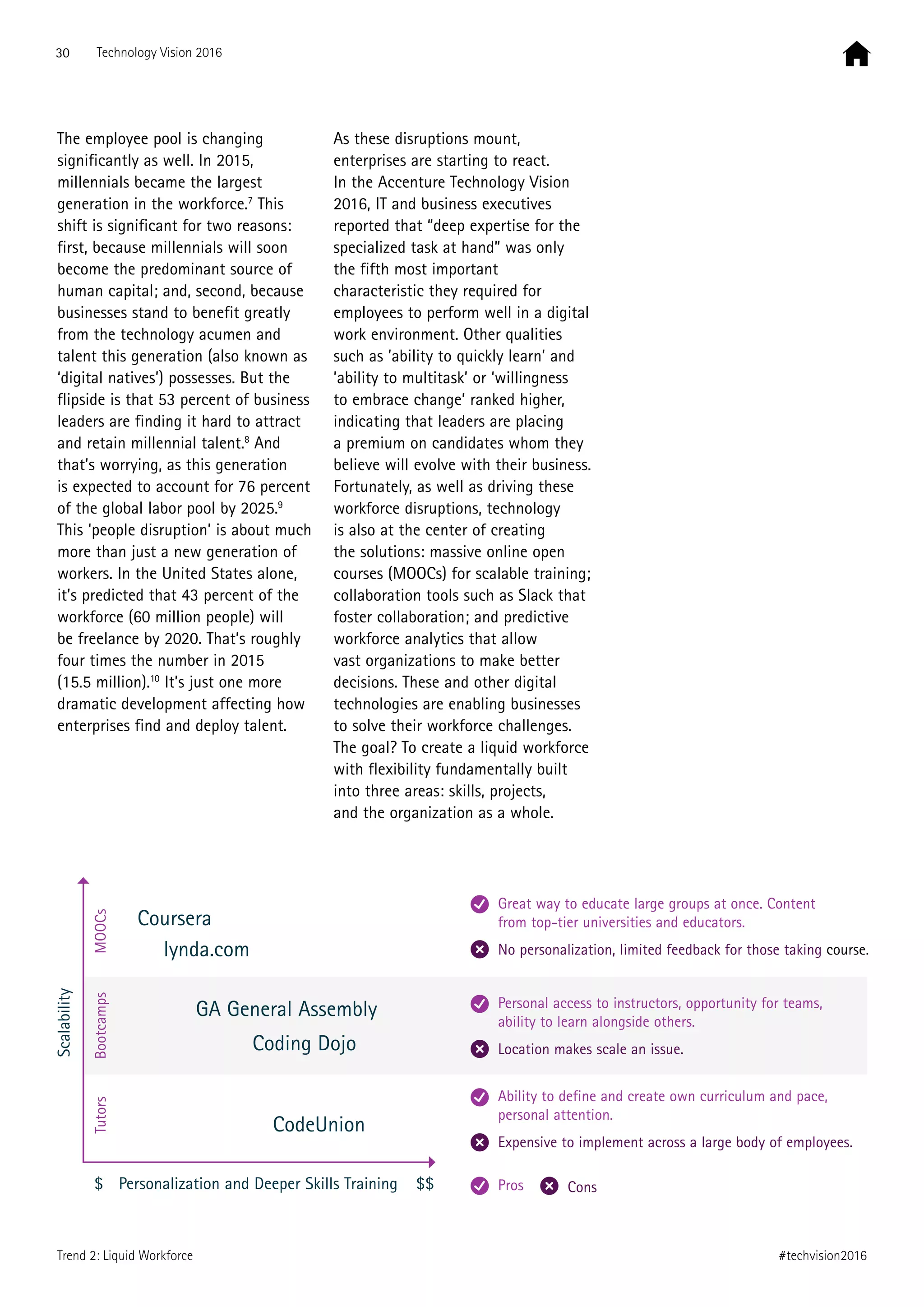
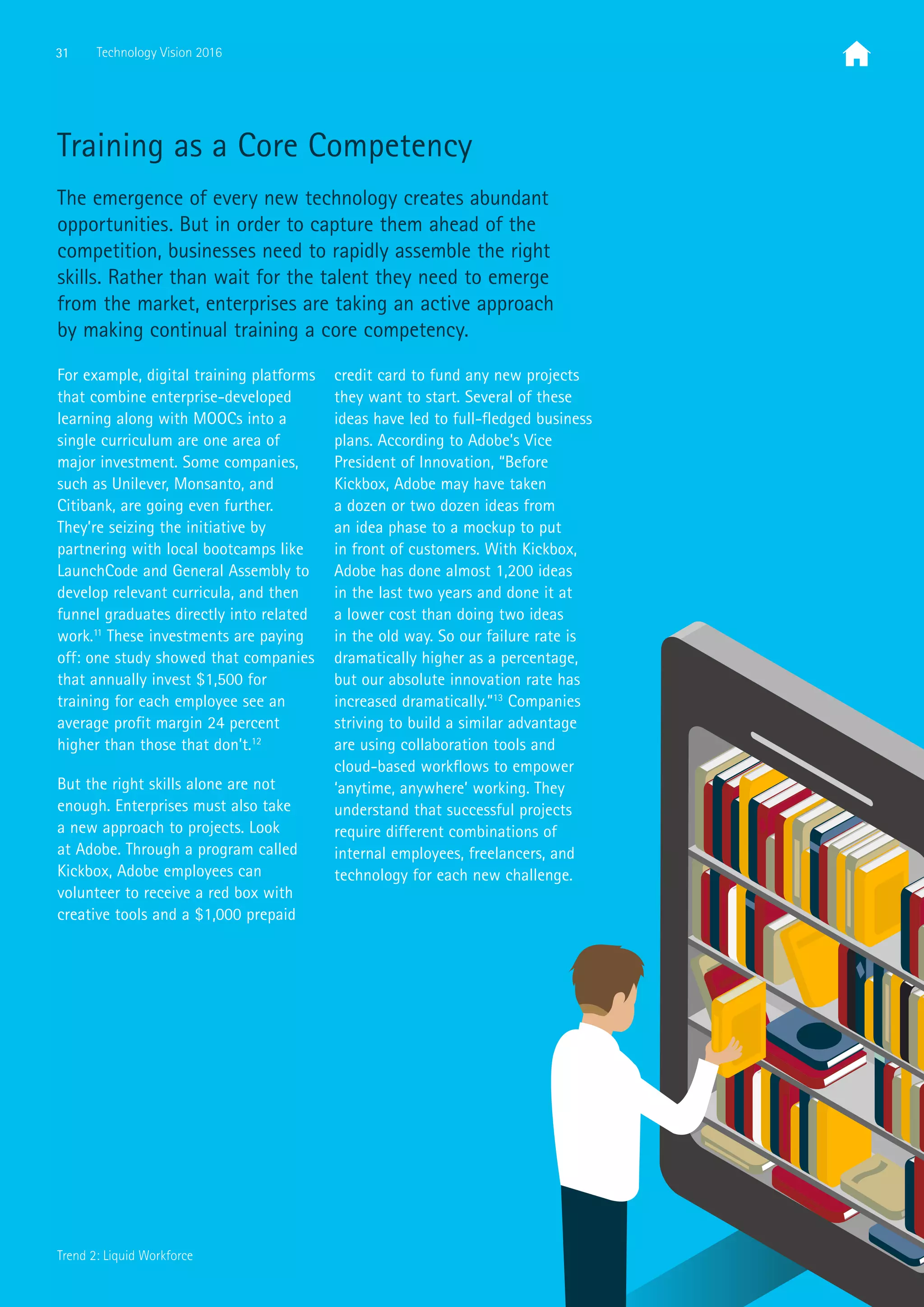
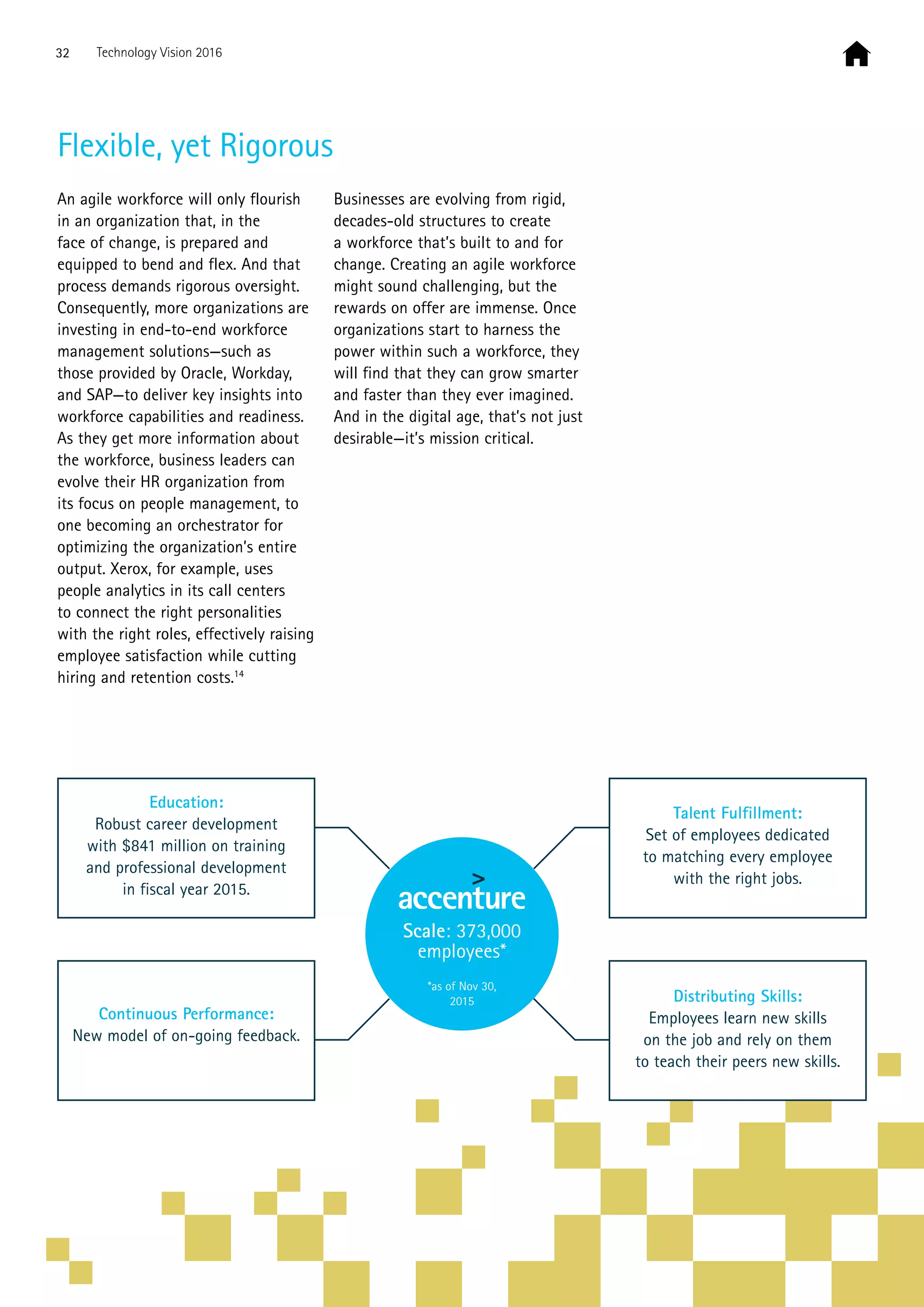
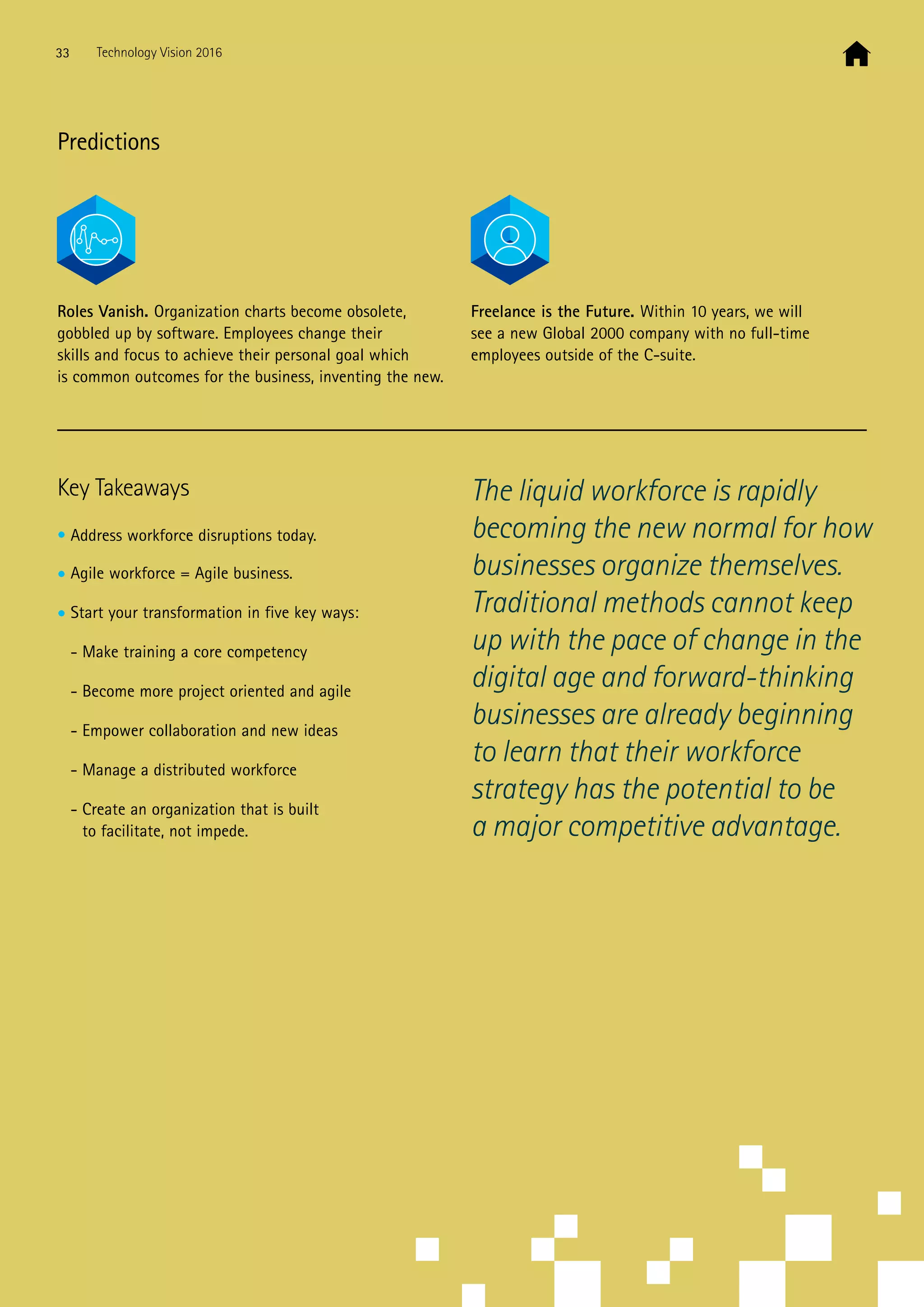

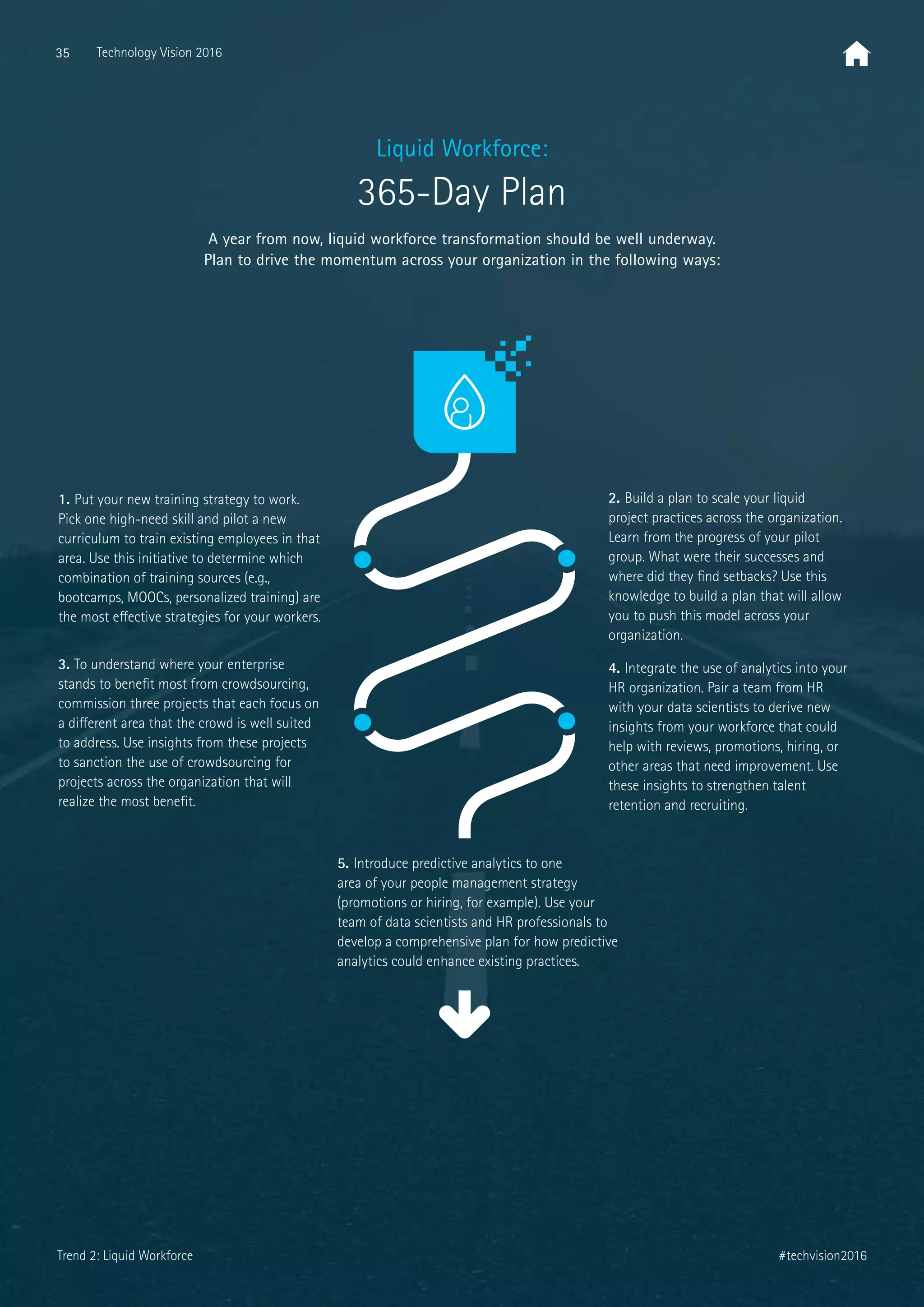
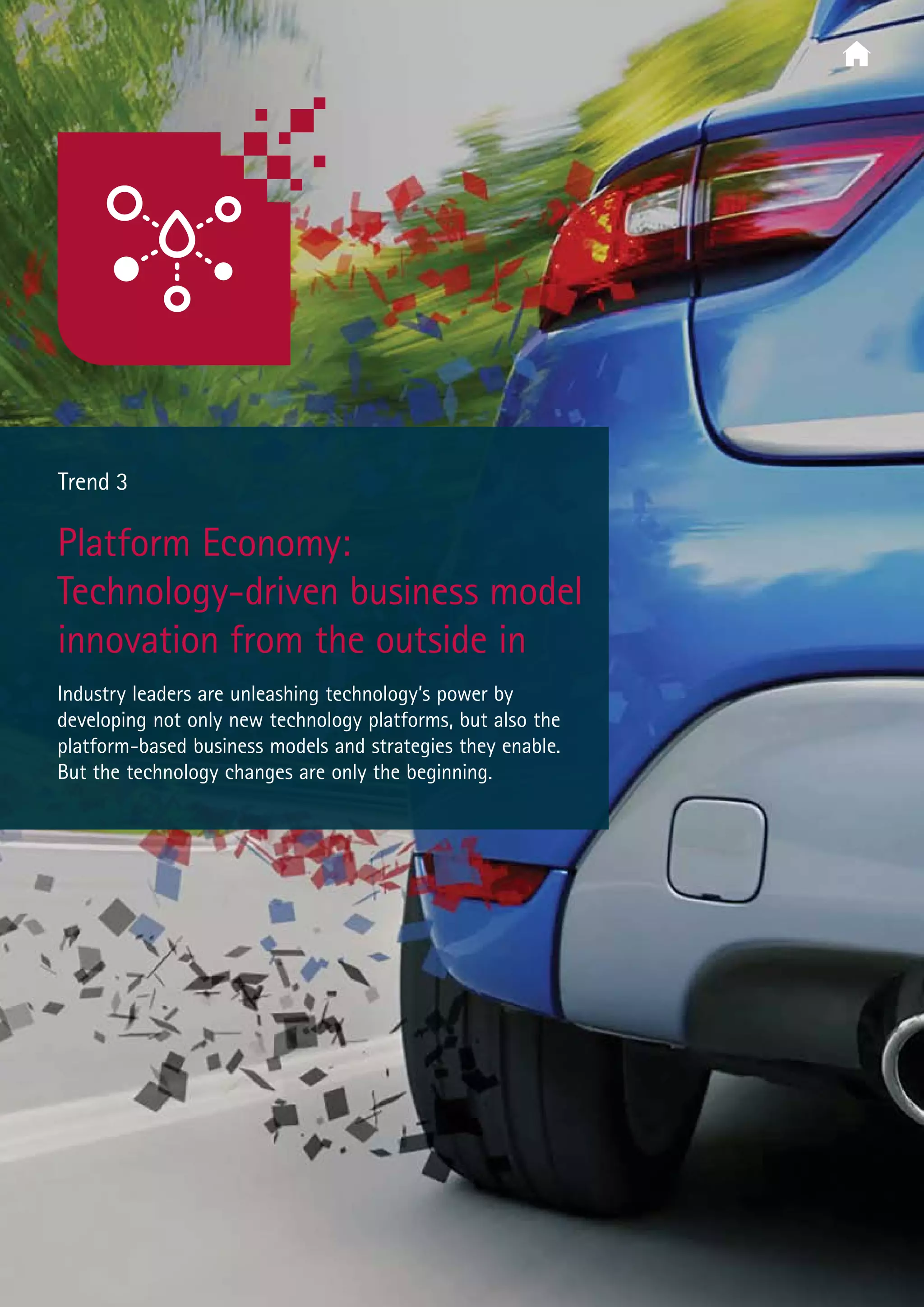

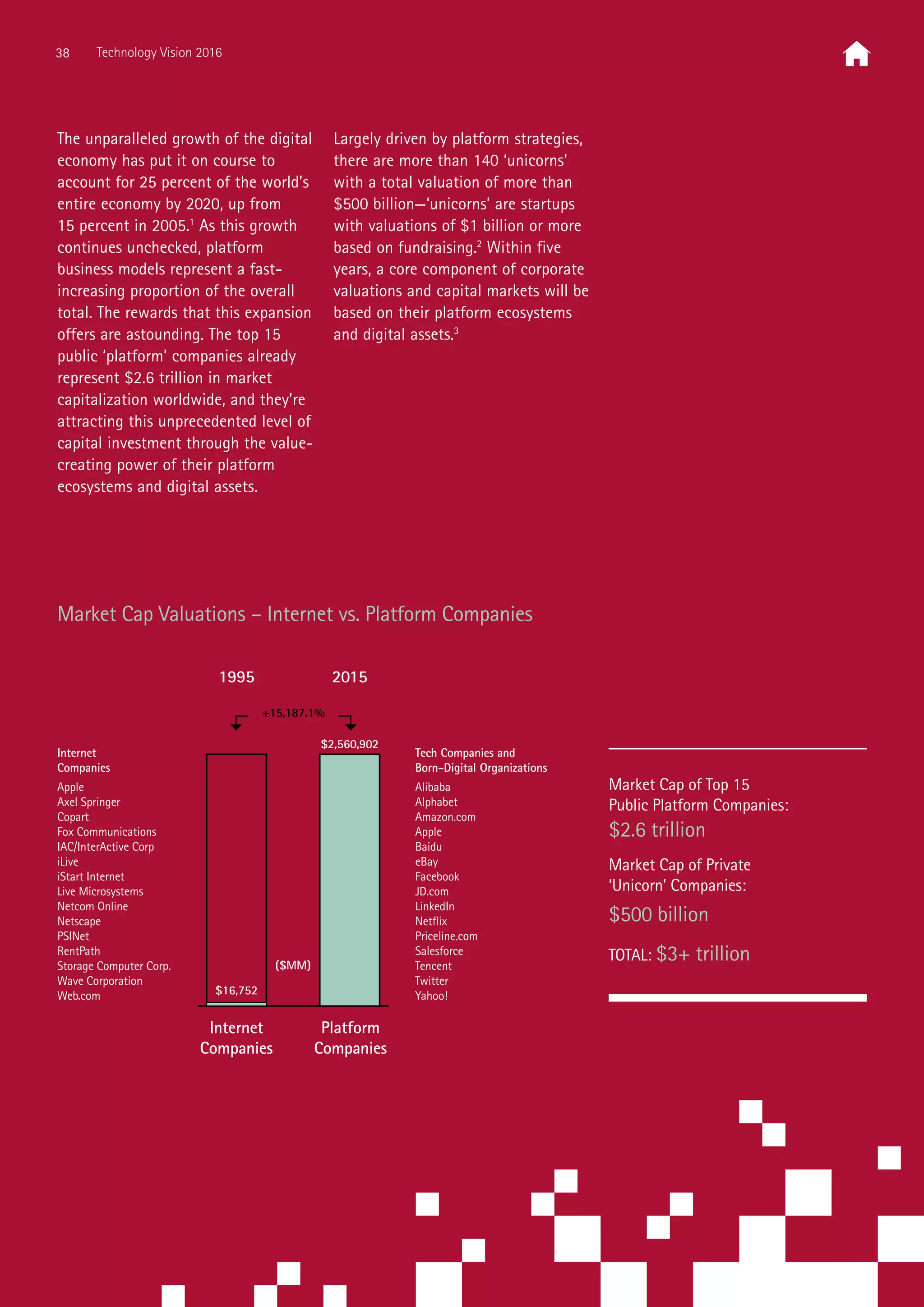

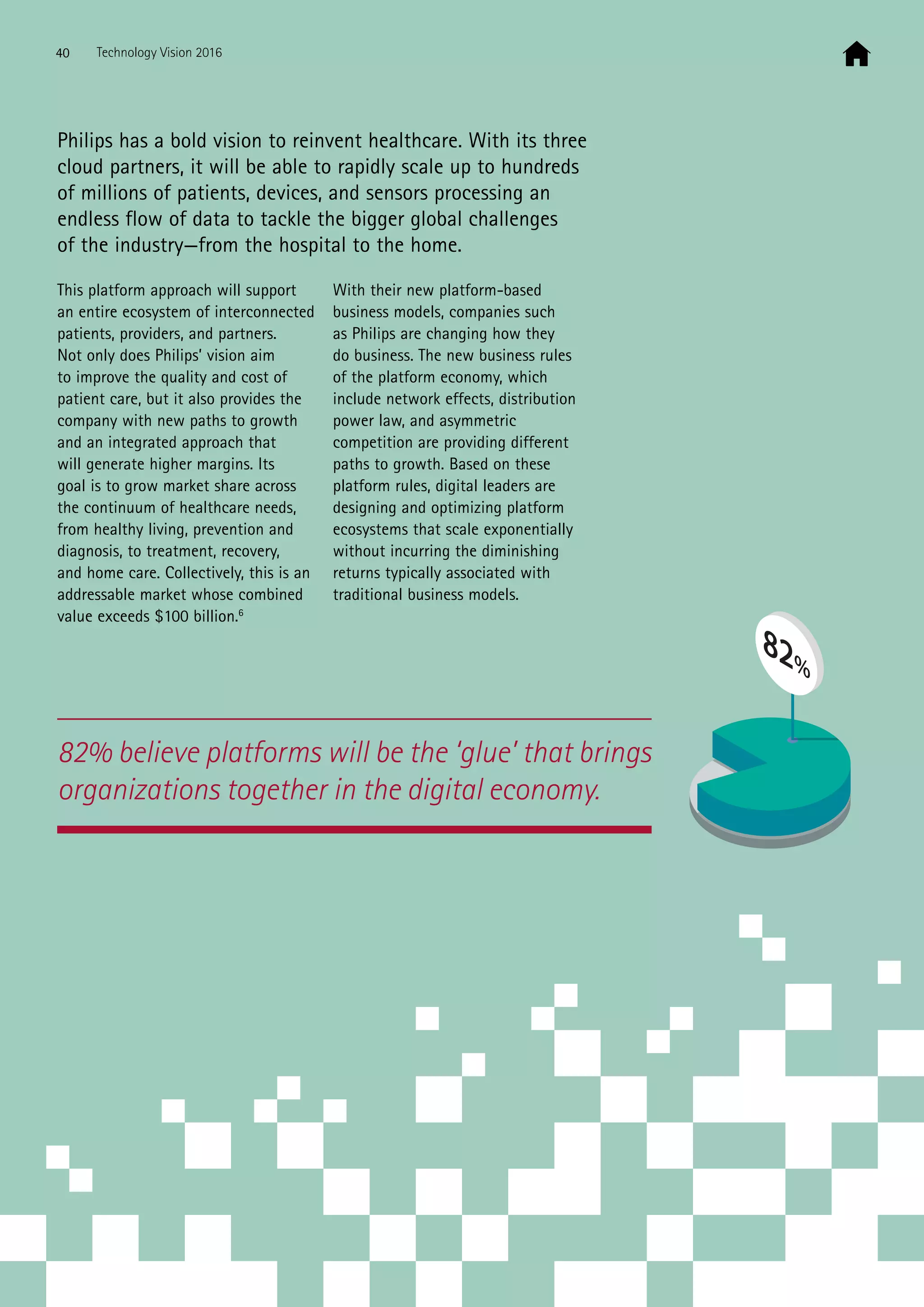
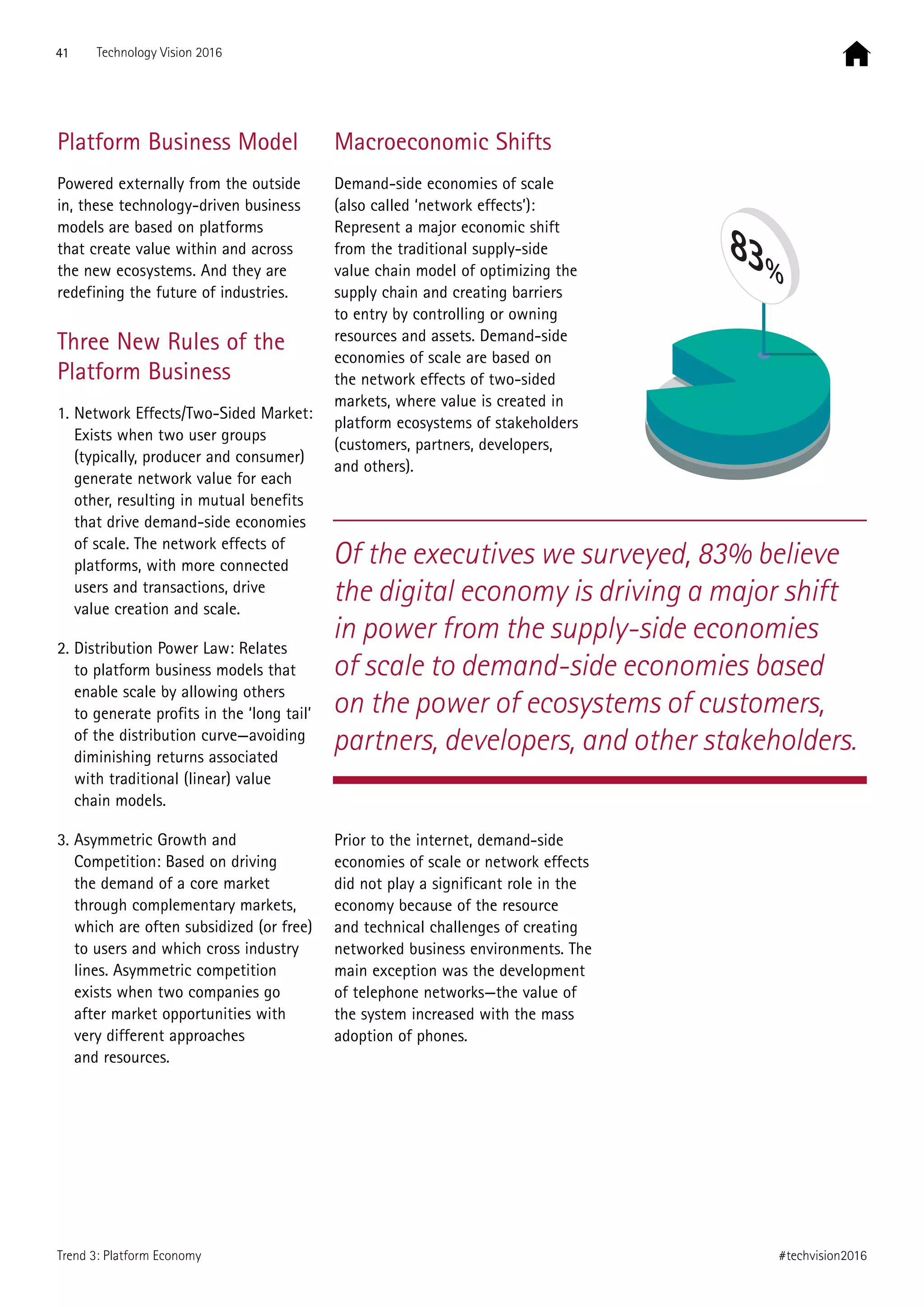
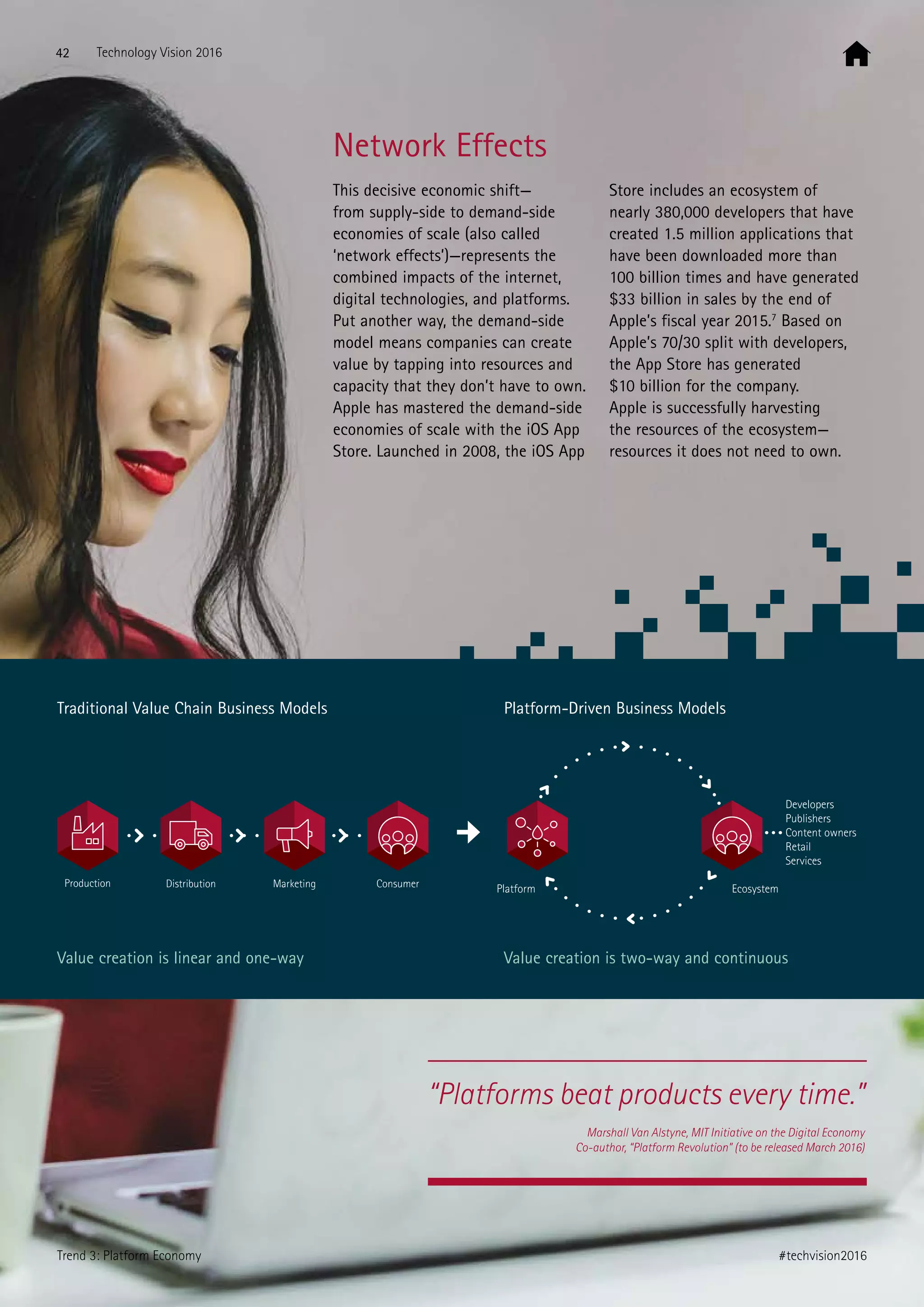
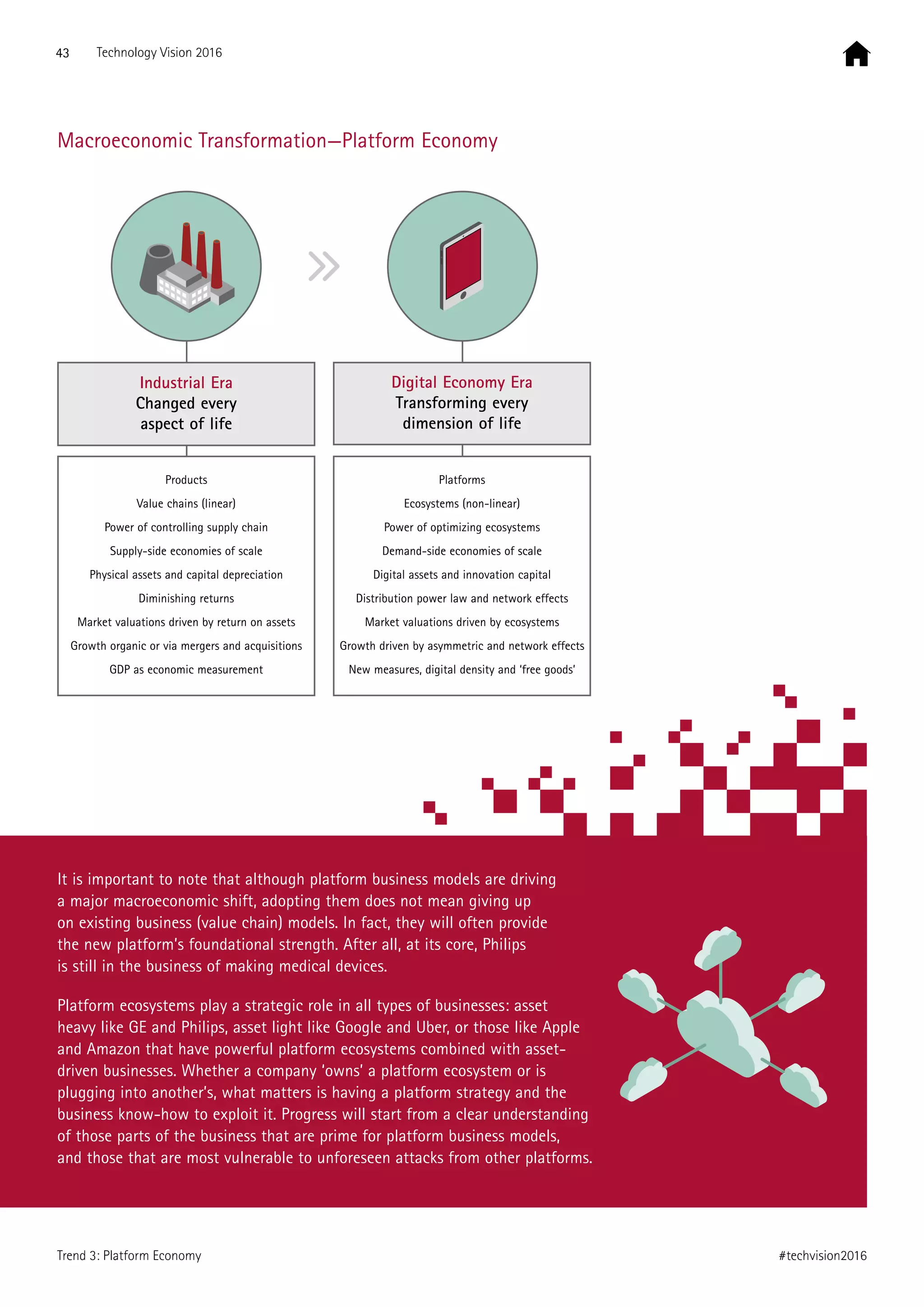
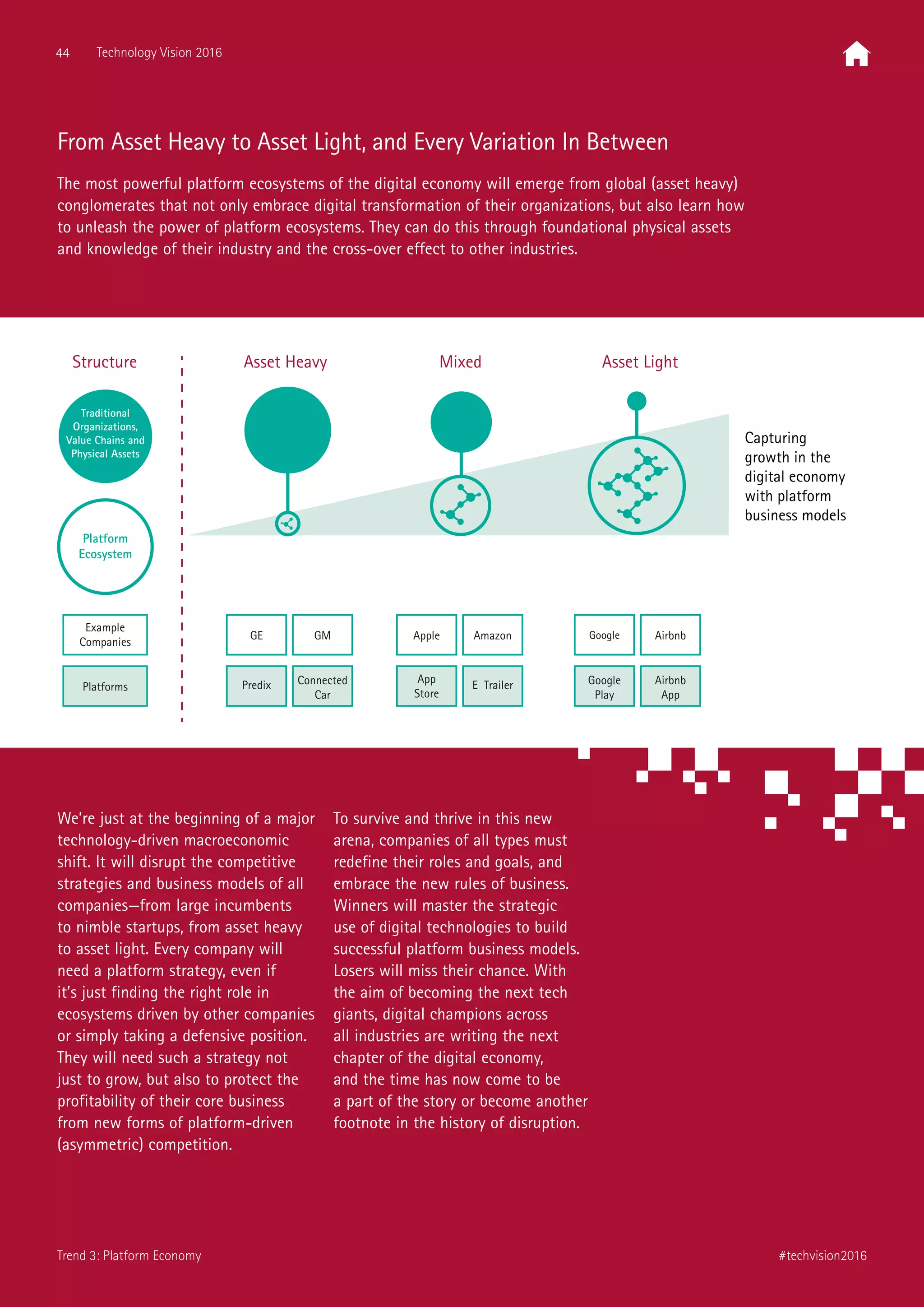
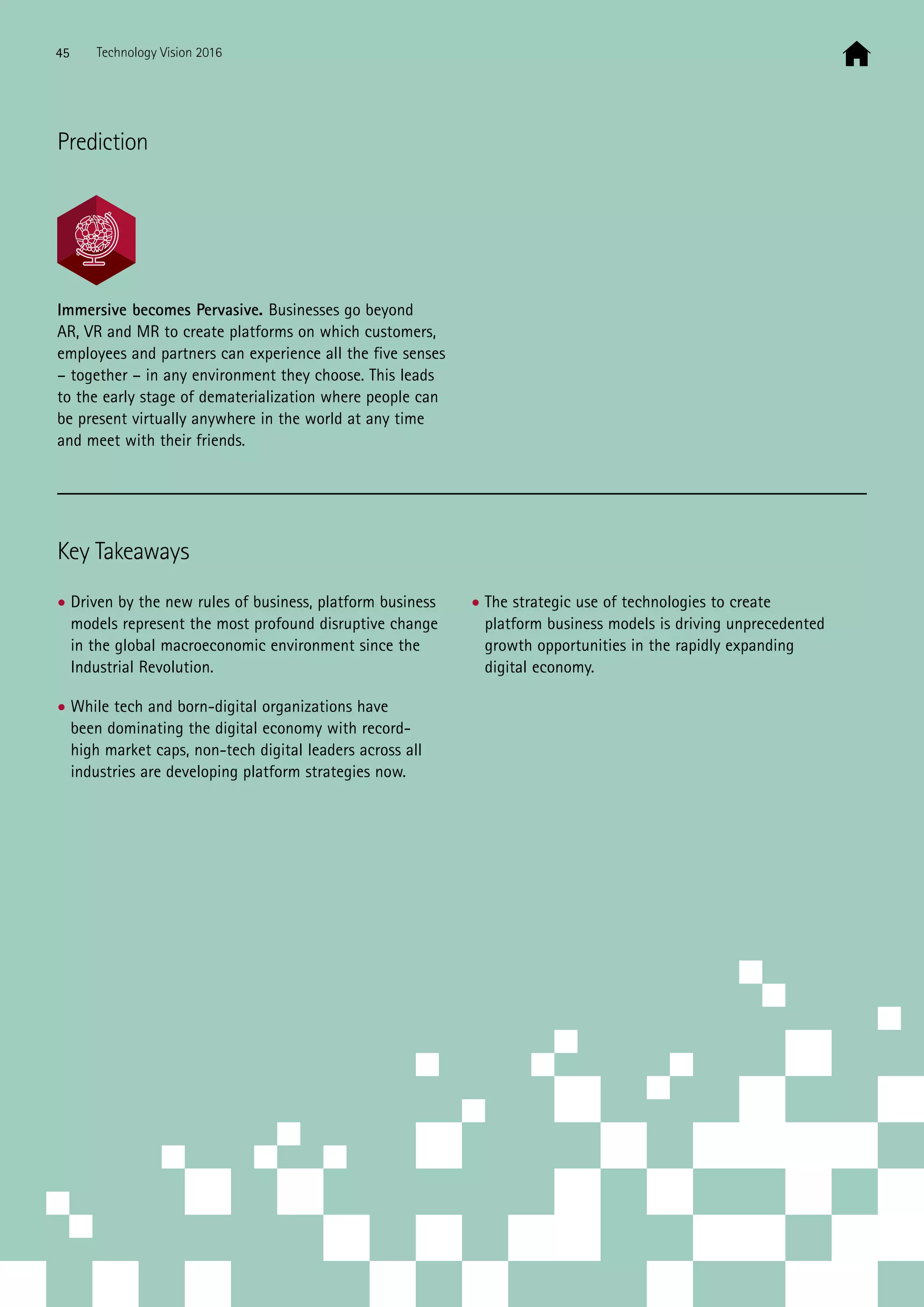
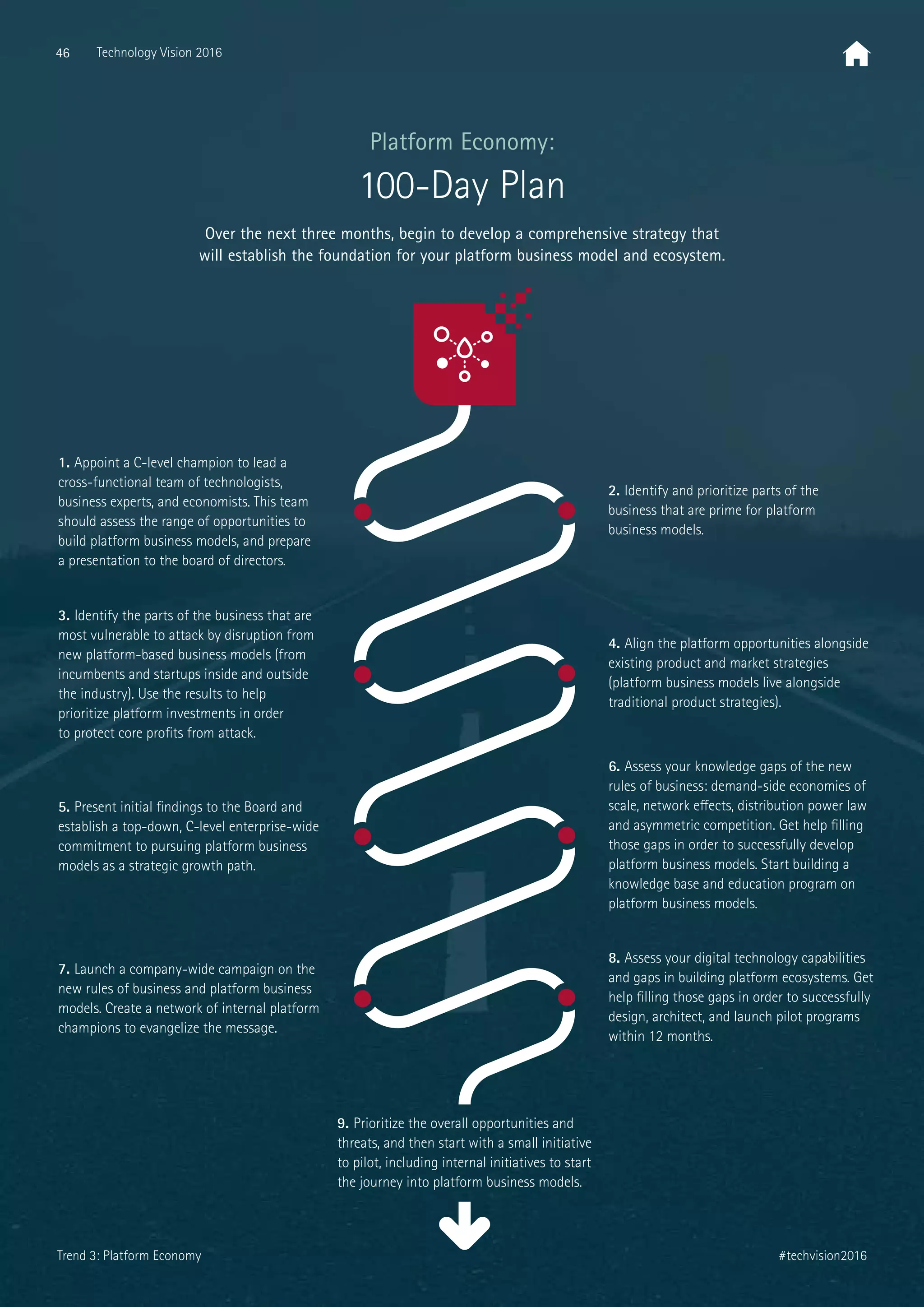
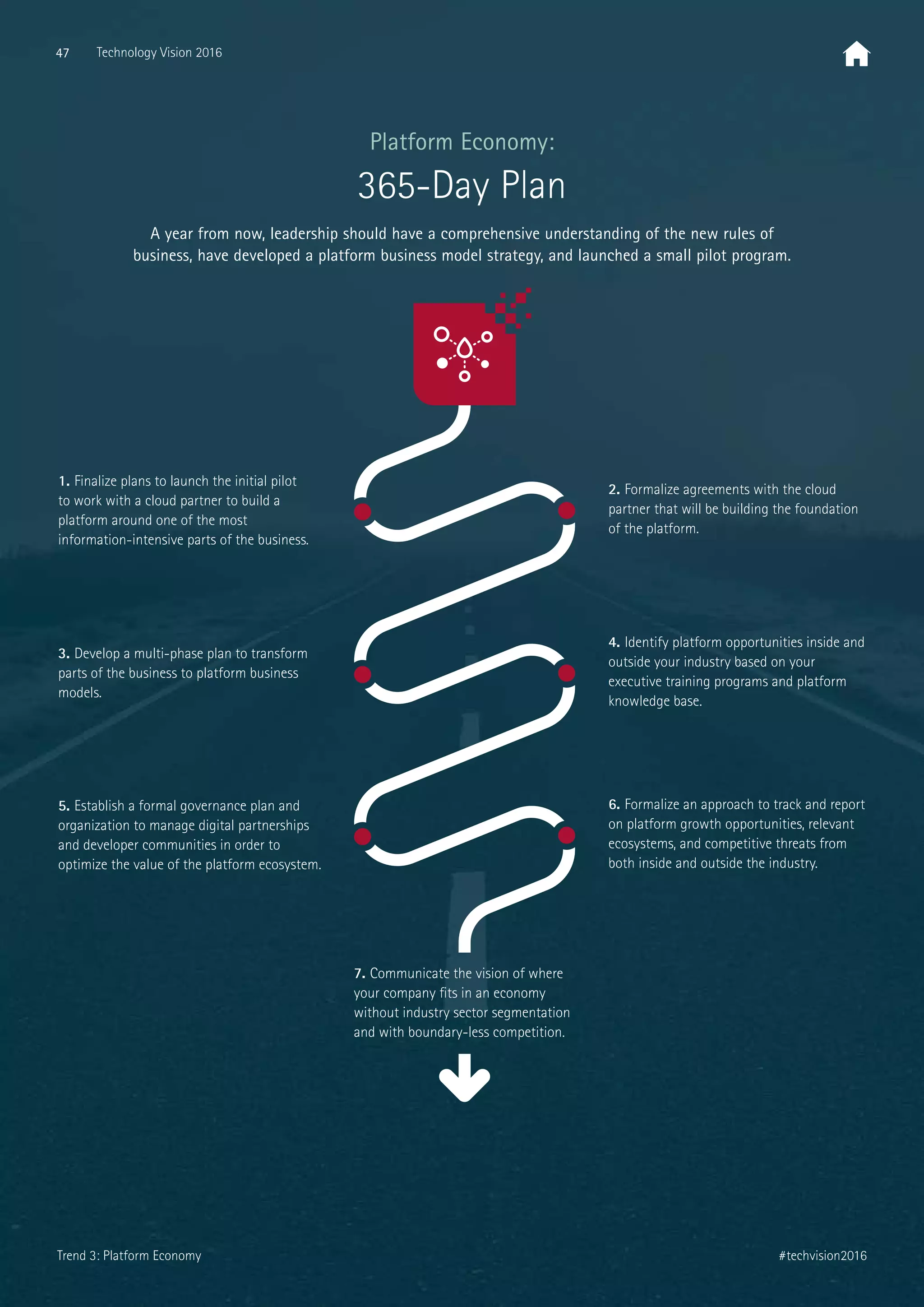
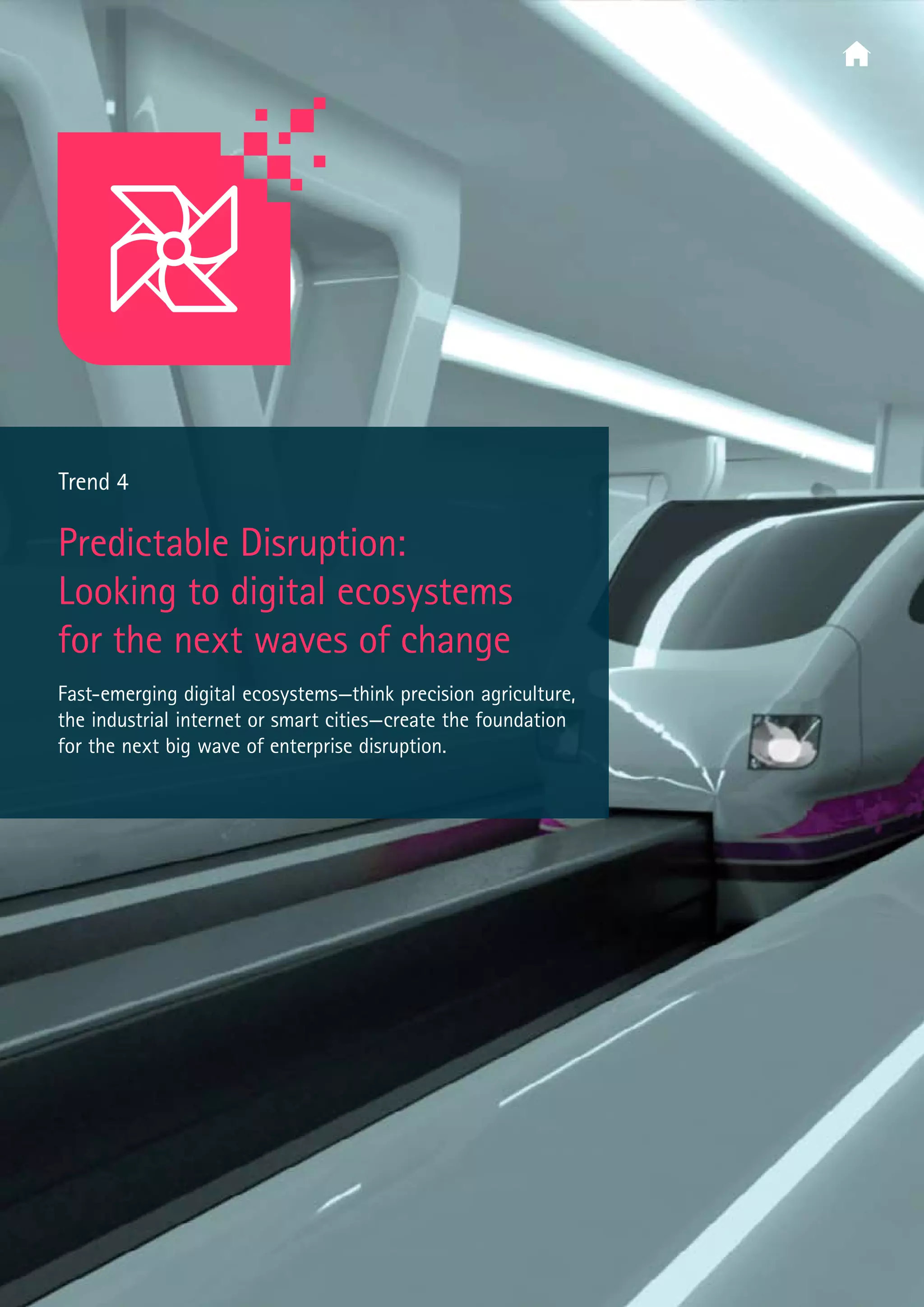
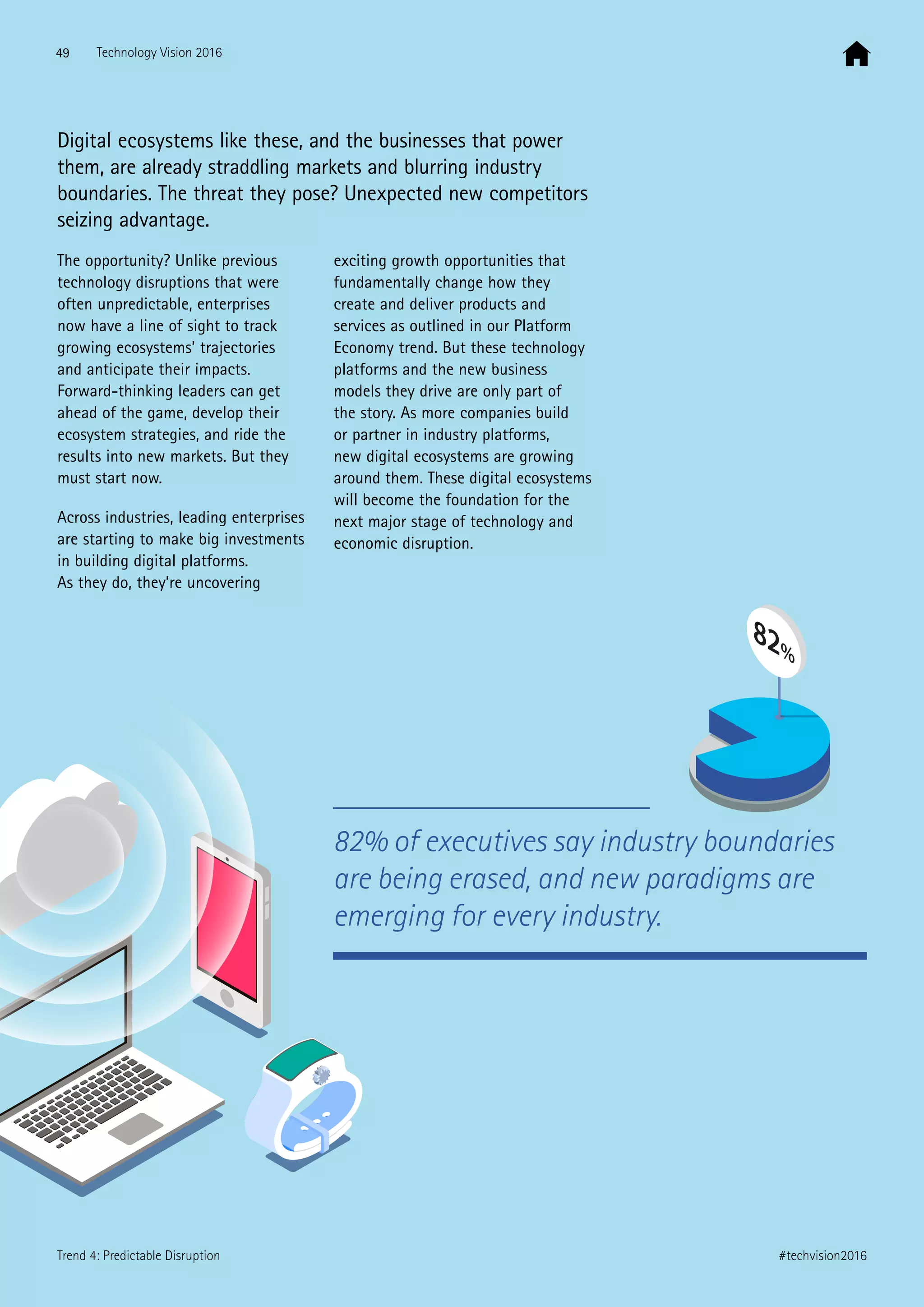
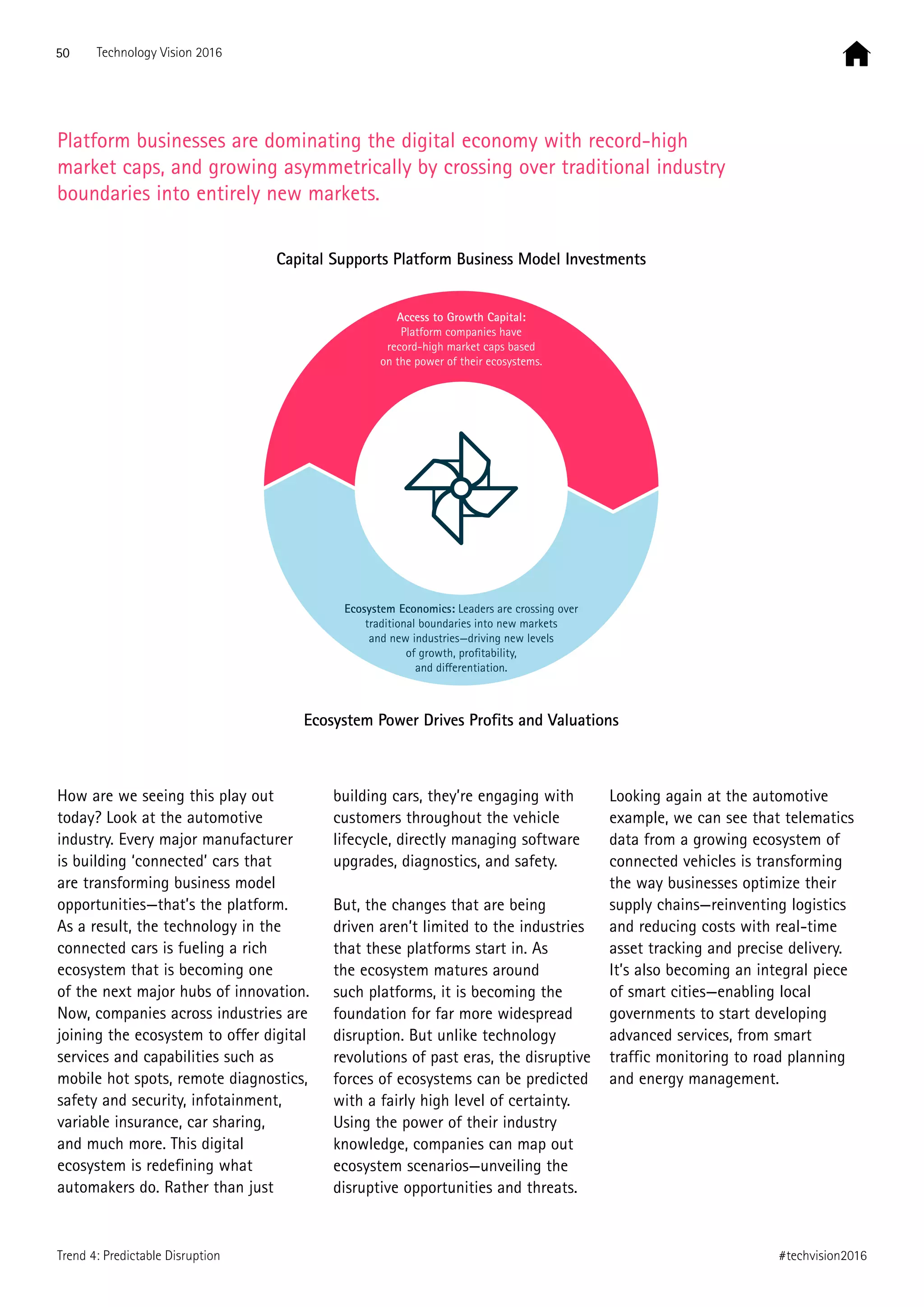
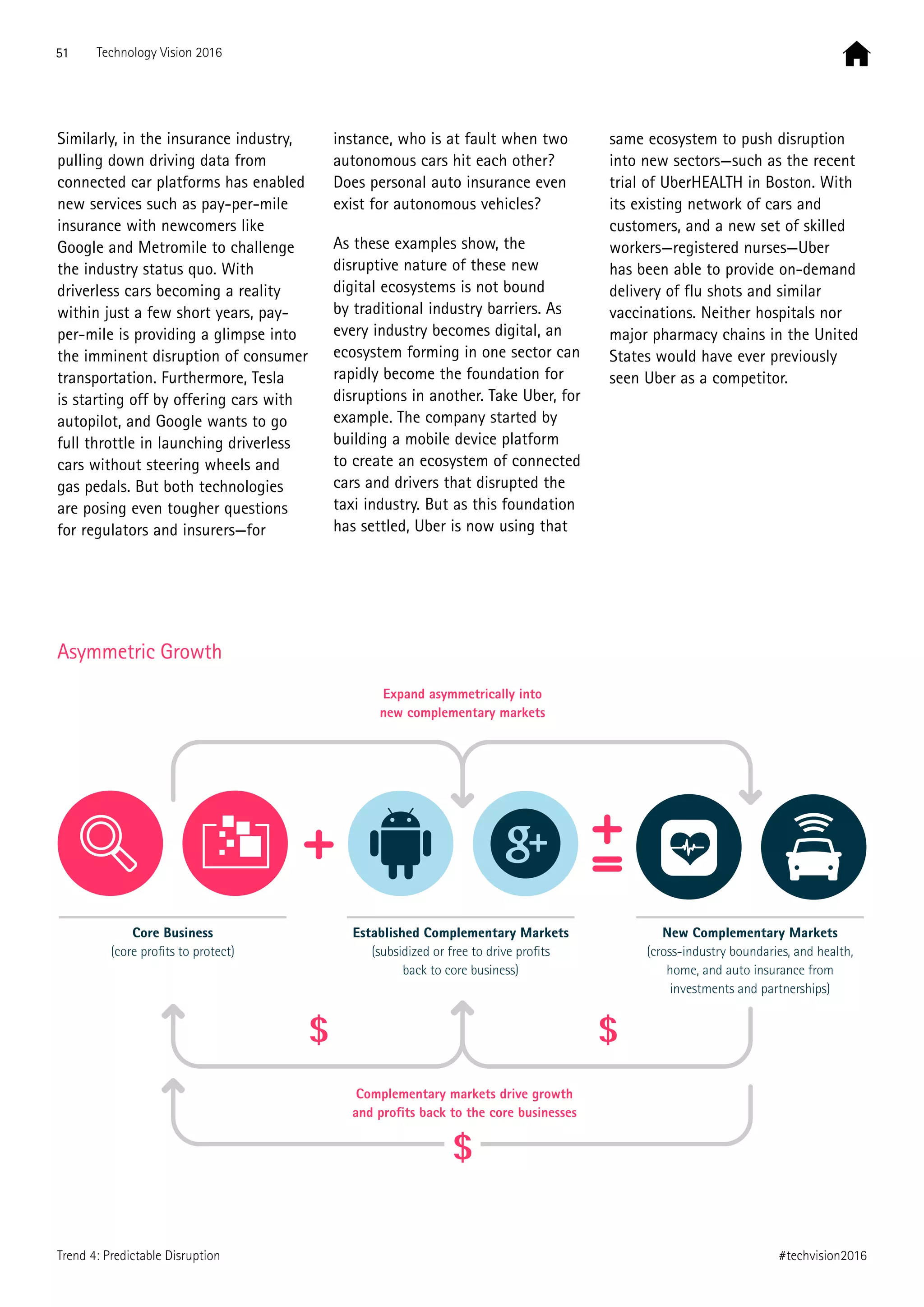
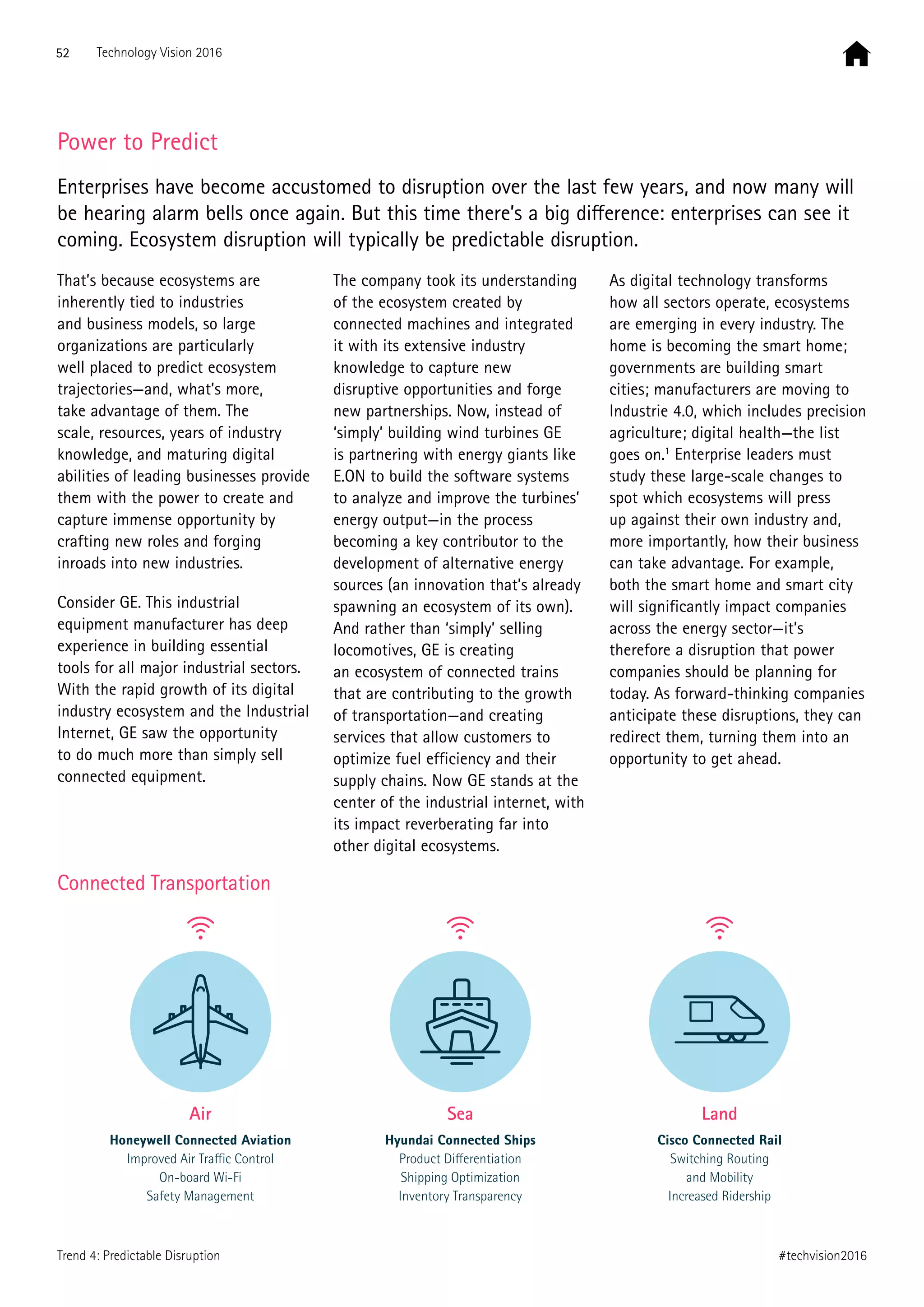
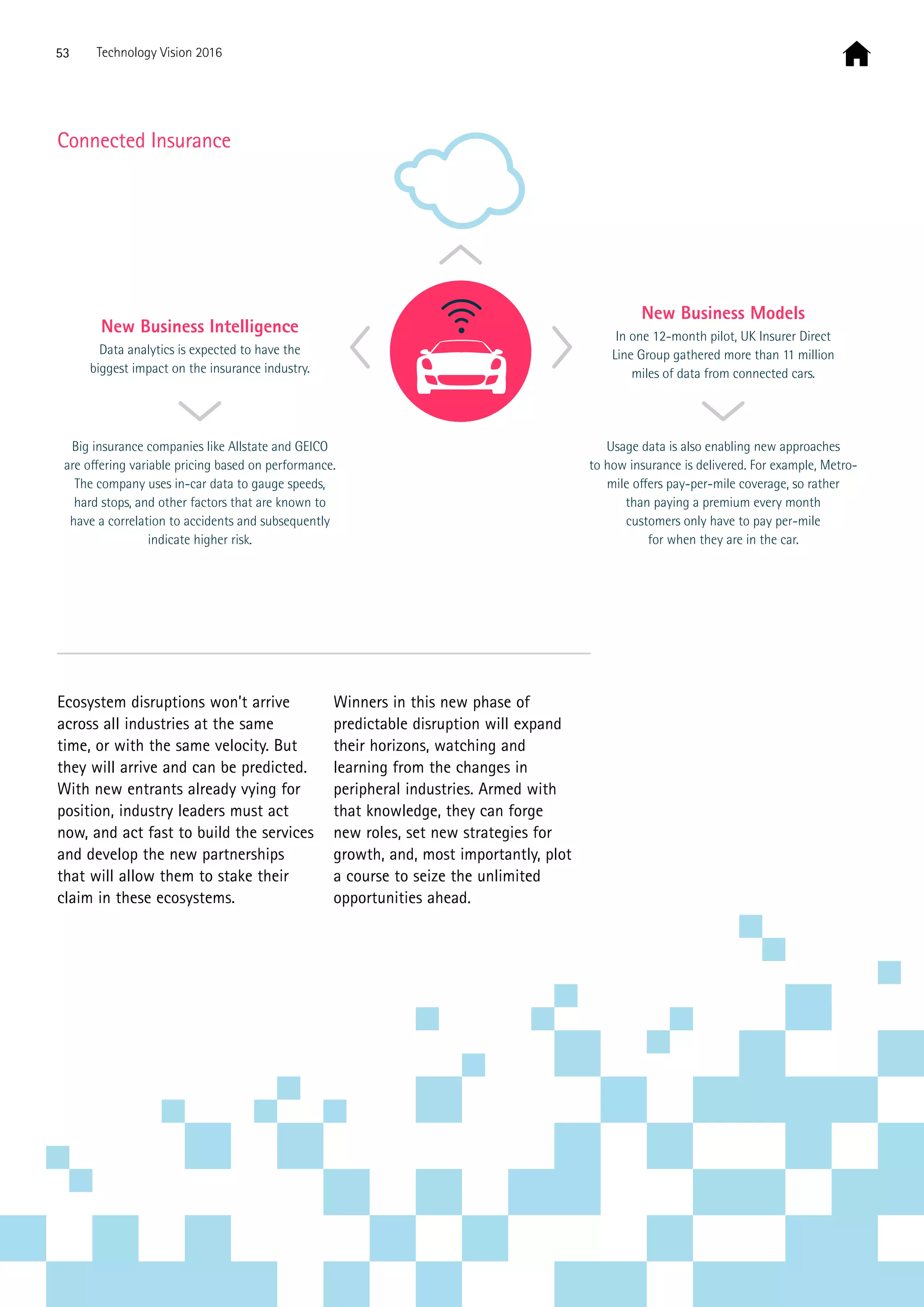
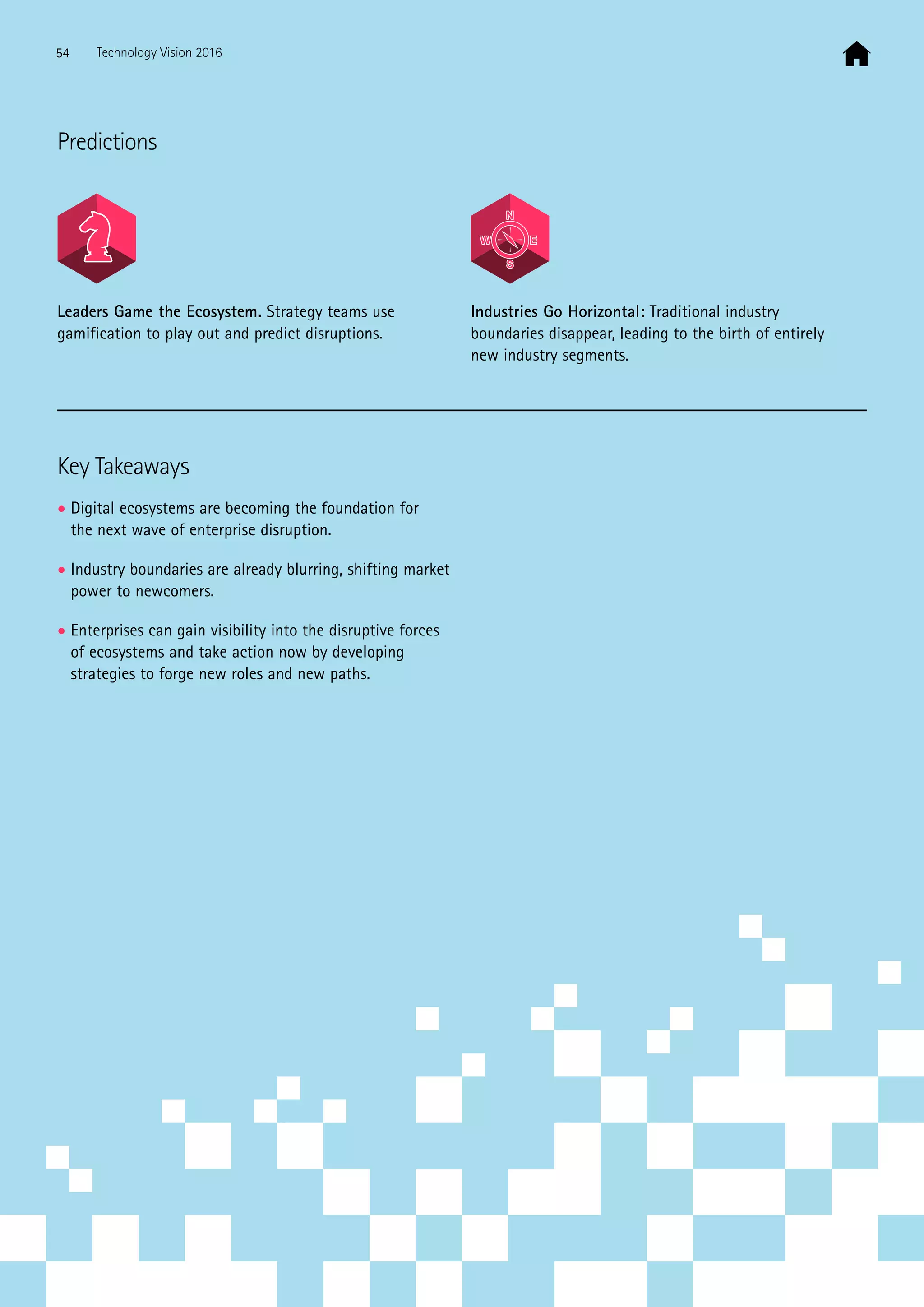

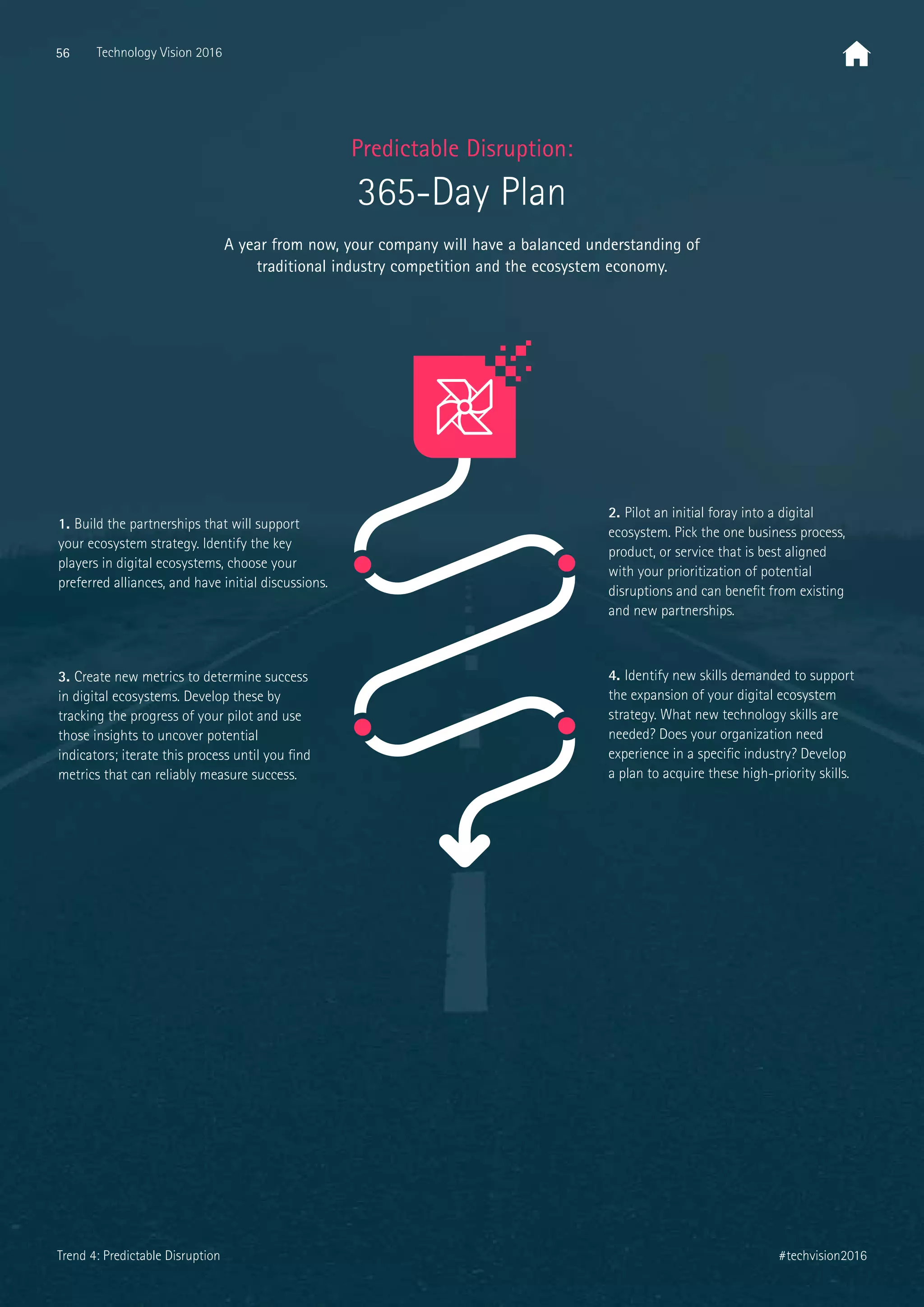
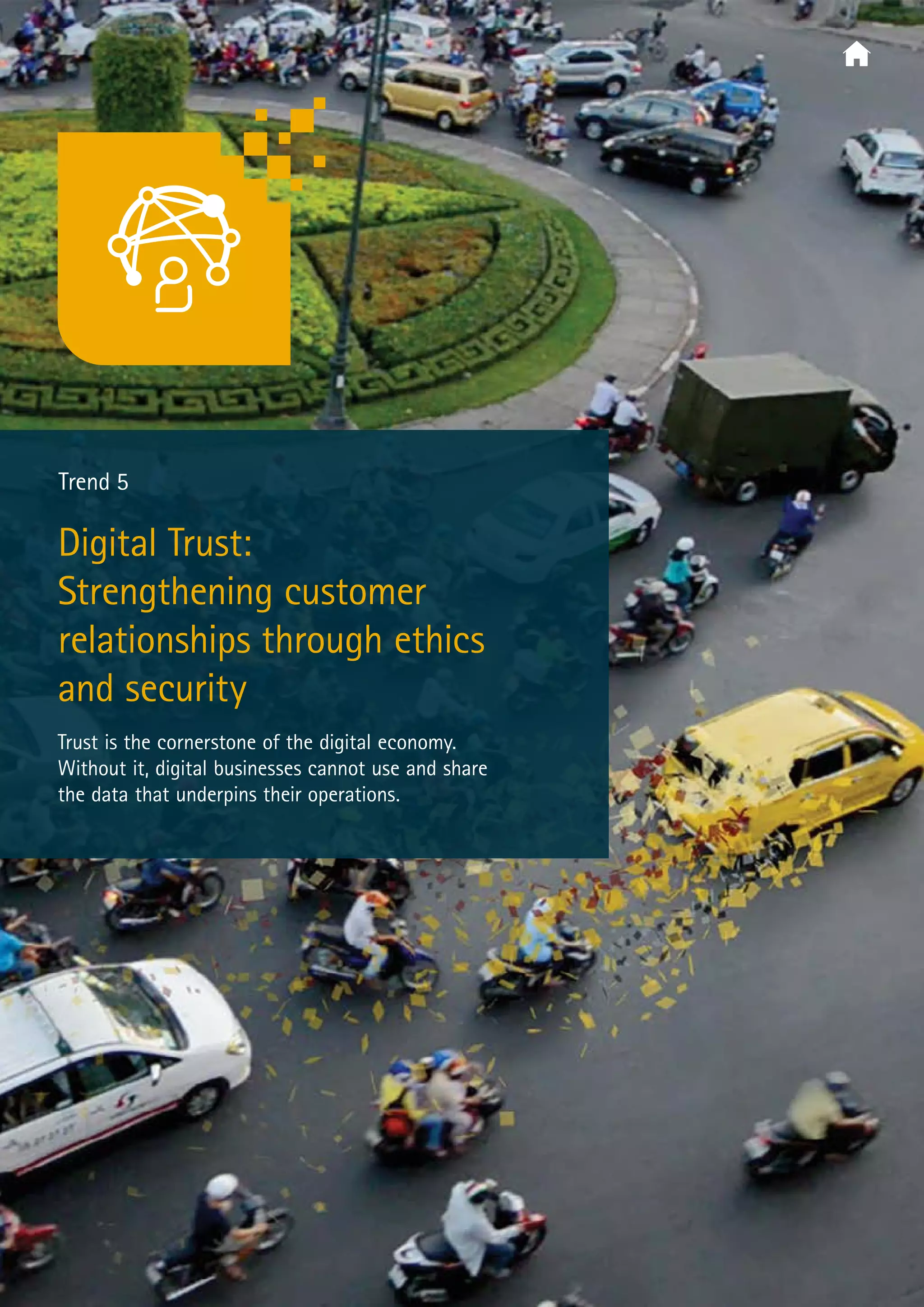
![83% agree that trust is the
cornerstone of the digital economy.
To gain the trust of individuals, ecosystems, and regulators
in the digital economy, businesses must possess strong
security and ethics at each stage of the customer journey.
And new products and services must be ethical- and secure-
by-design. Businesses that get this right will enjoy such
high levels of trust that their customers will look to them
as guides for the digital future.
After the consumer outcry from its
iCloud breach in 2014, Apple came
to understand afresh the importance
of trust. Its efforts to be transparent
in how it uses and secures customer
data is testimony to the value this
leading brand places on trust.1
Its
new platforms, such as Apple Pay
and HealthKit, are clear beneficiaries
of this trusted-by-design approach
because the strong security and
ethics that are ‘baked in’ give
customers confidence that their
digital footprints are secure and
private, easing the transition to
and adoption of the Apple ecosystem.
This underscores the role trust plays
as digitally powered companies look
to disrupt their own markets and
enter new ones.
As the example of Apple shows,
trust differentiates competitors
in the digital economy where
businesses can reach vastly more
people, iterate quicker, and make
faster, better decisions than ever
before. Eighty-three percent of
respondents to the Accenture
Technology Vision 2016 survey
agreed that trust is the cornerstone
of the digital economy. But what’s
at stake is more than just the
benefits of building good will.
Inherent in a company’s use of
technology to rapidly scale is the
risk of amplifying mistakes.
Rapidly releasing products and
services to tens or hundreds of
millions of consumers, or sharing
data about consumers at that scale,
makes exposure to business risk more
systemic. This can potentially result
in the loss of previously established
trust, which in turn can lead to the
loss of customers, market share,
and company valuation.
Exemplifying the importance that
trust plays in its ability to do
business, Apple told a federal court
that “forcing Apple to extract data
[from mobile devices]…could threaten
the trust between Apple and its
customers and substantially tarnish
the Apple brand.”2
Companies such
as Apple that understand the
importance of trust in the digital
economy know that in order to
compete, push boundaries, and
offer new services, they must design
products and services that are
both ethical and secure-by-design.
Microsoft is designing products this
way too. The company is opening
data centers in Germany that will
be managed and operated by a third
party, allowing German customers
to use Microsoft technology but to
have all of their data controlled
by a German company, without
a ‘back door’ for Microsoft.3
83%
58 Technology Vision 2016
#techvision2016Trend 5: Digital Trust](https://image.slidesharecdn.com/34205be9-6e1f-4c80-abfc-13019c25f0d3-160129181143/75/Accenture-Technology-Vision-2016-Full-Report-A4Web-58-2048.jpg)


